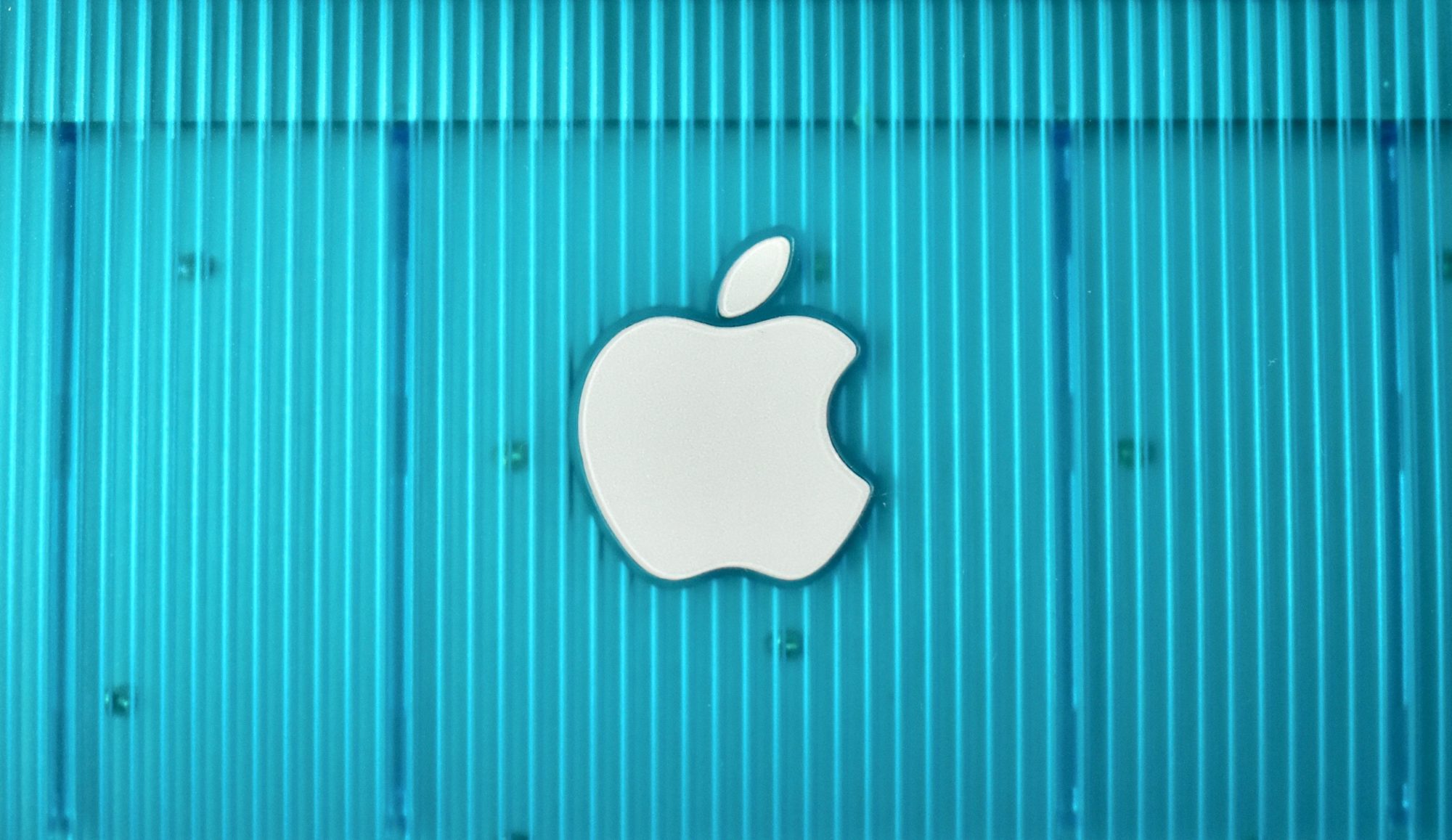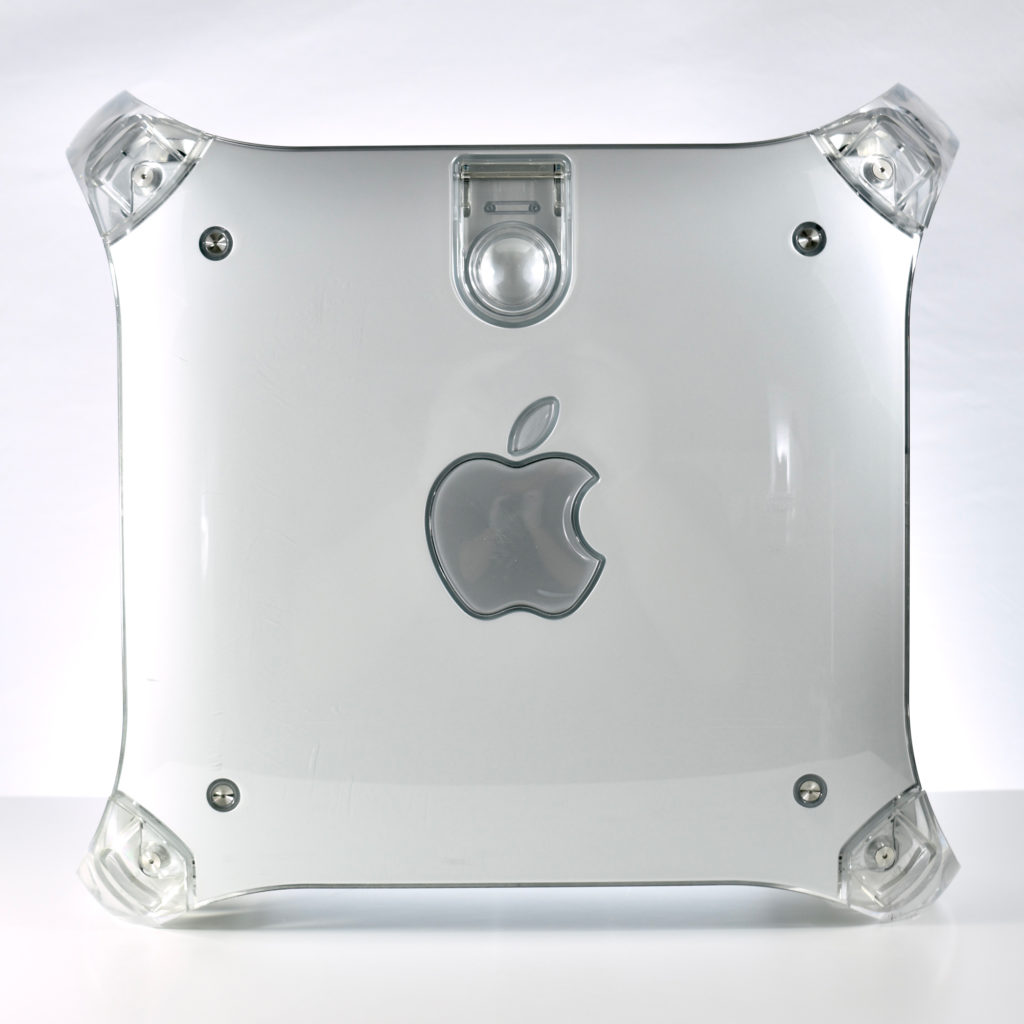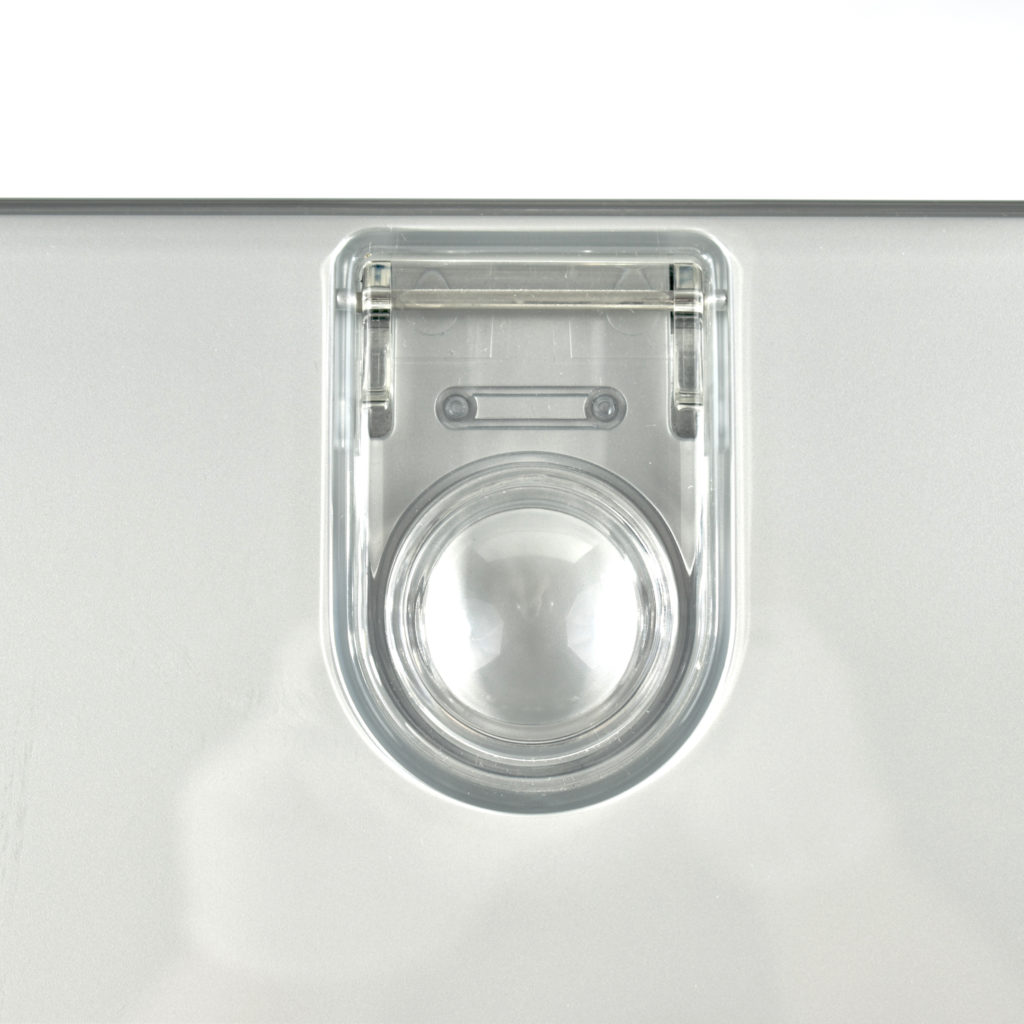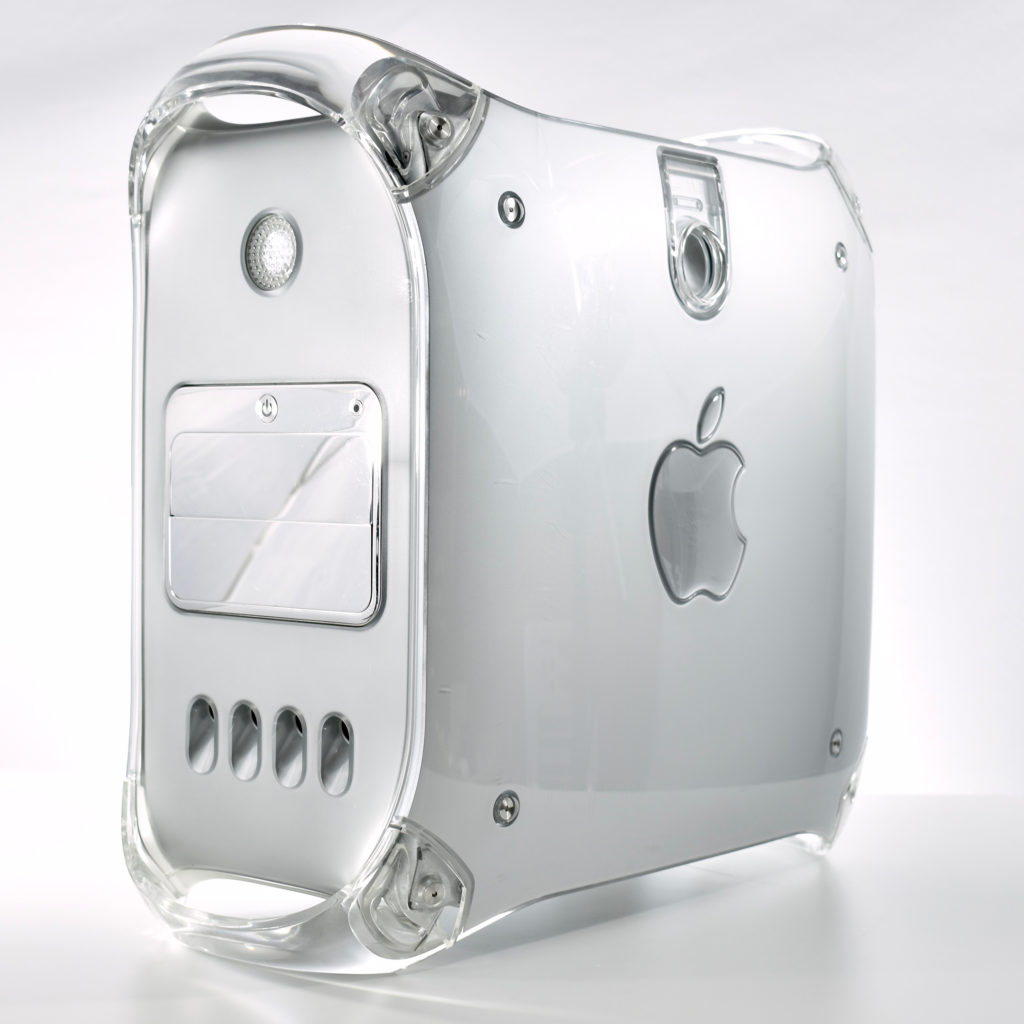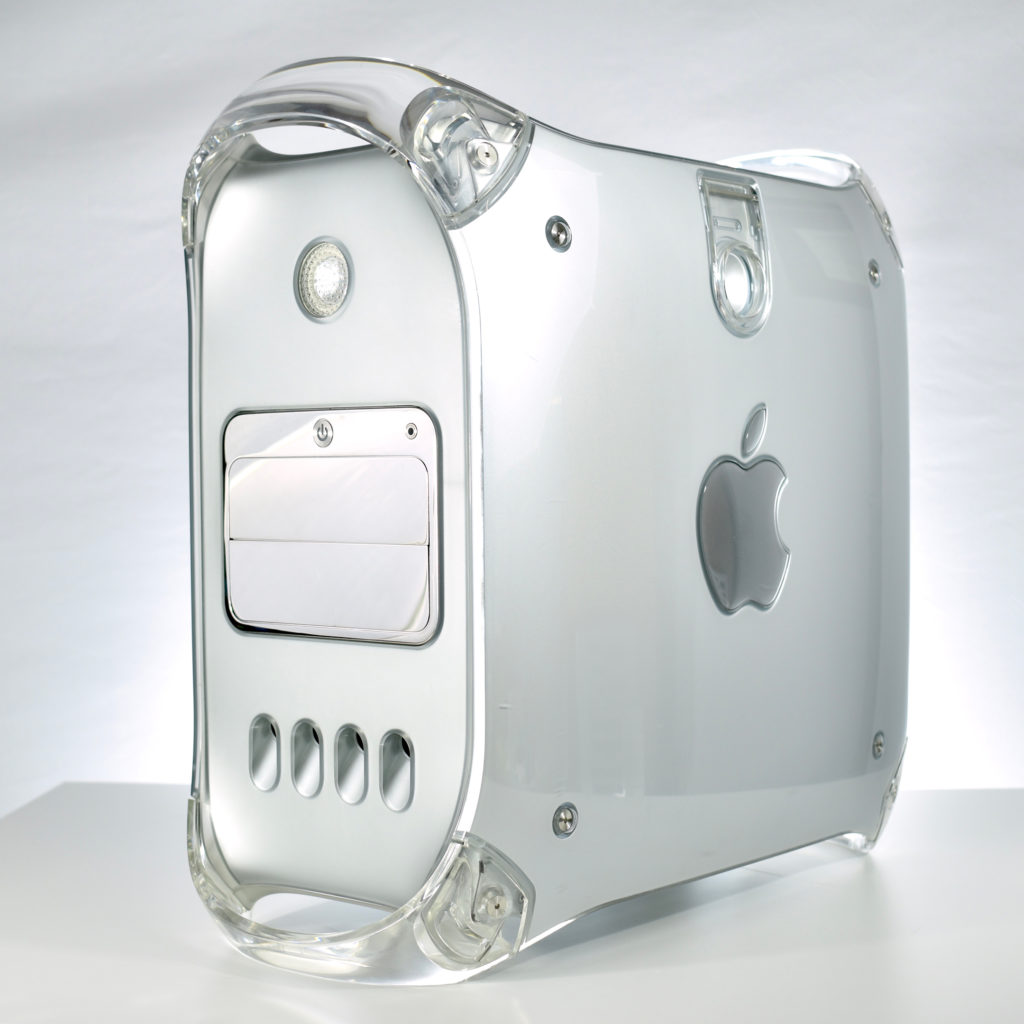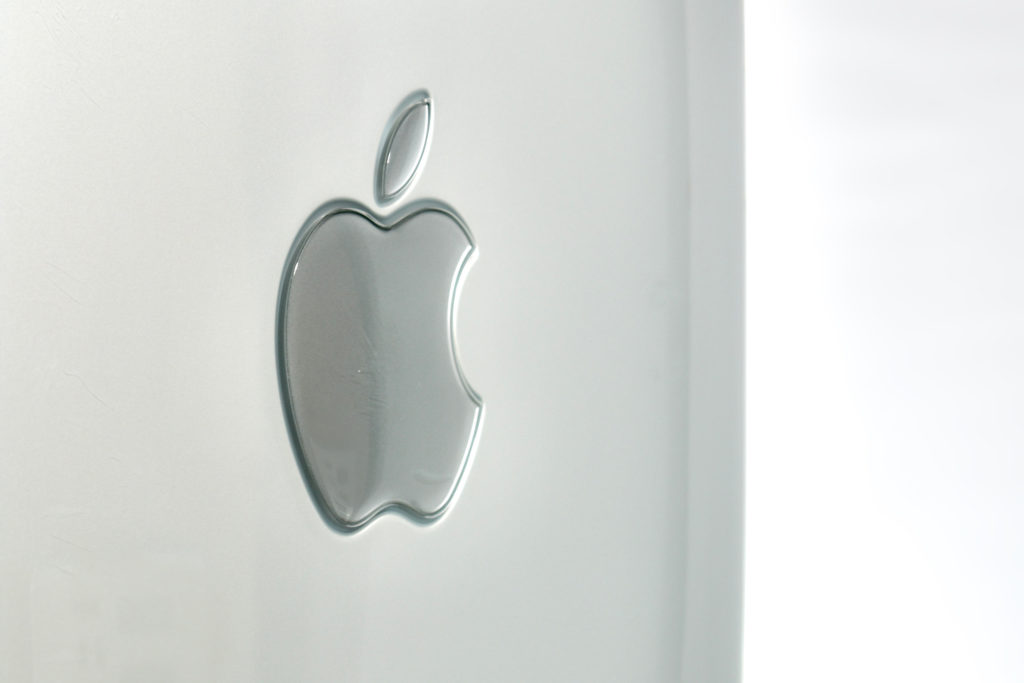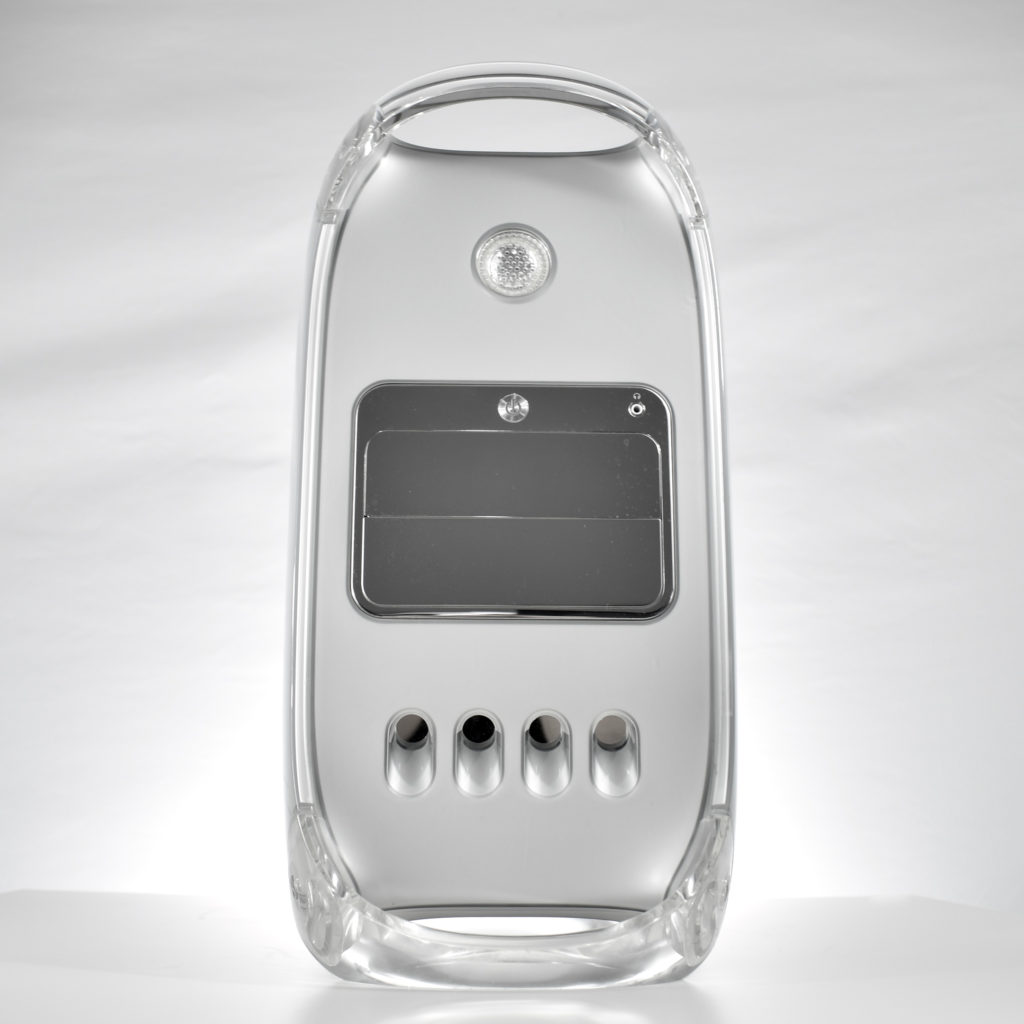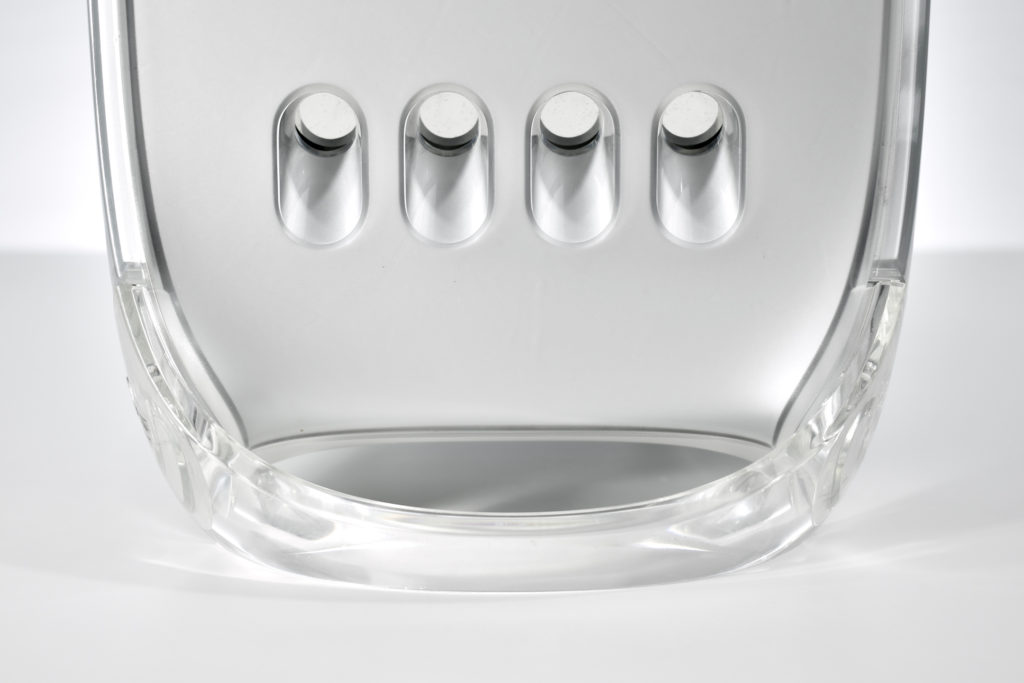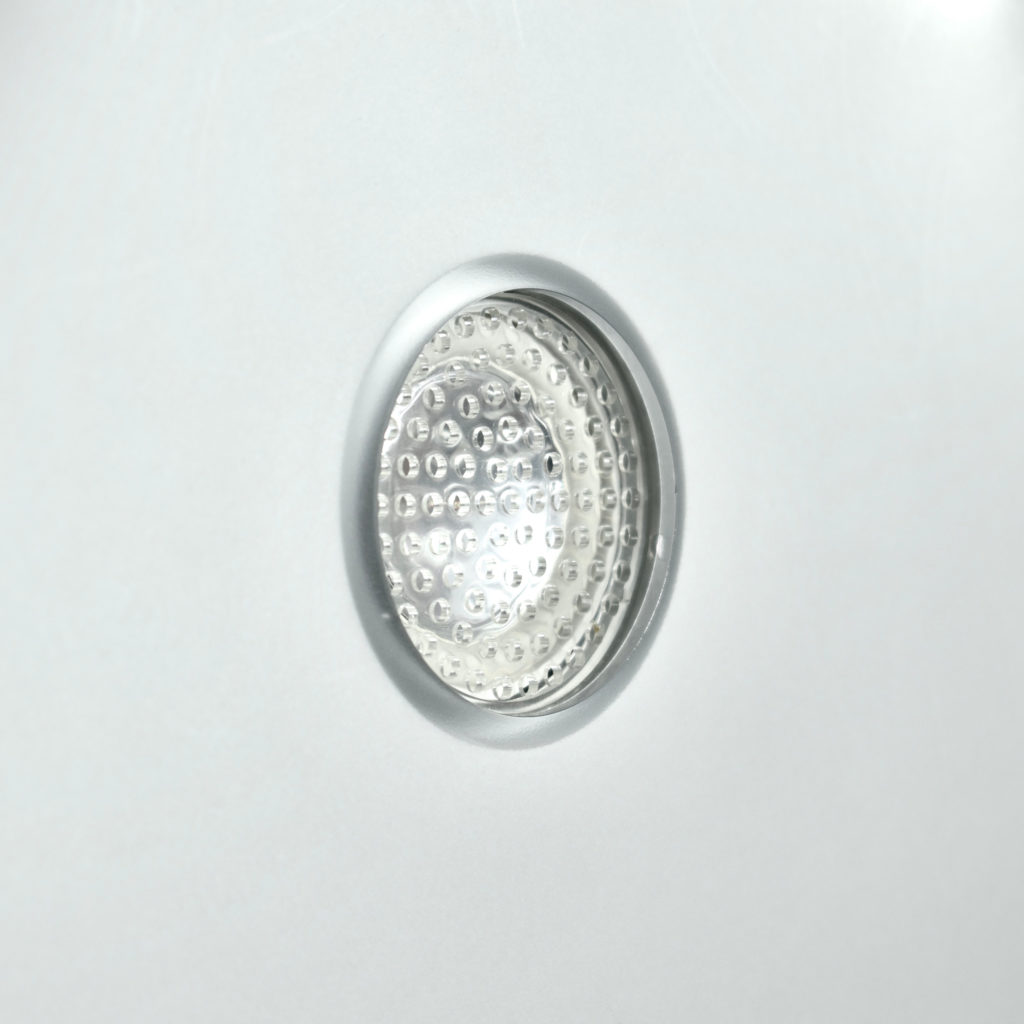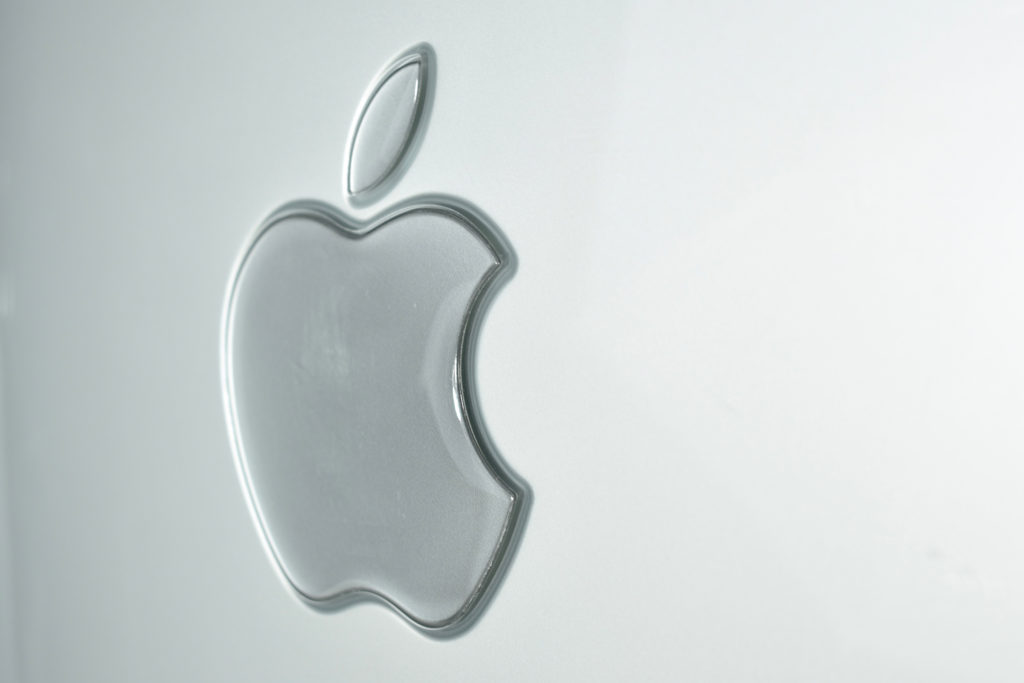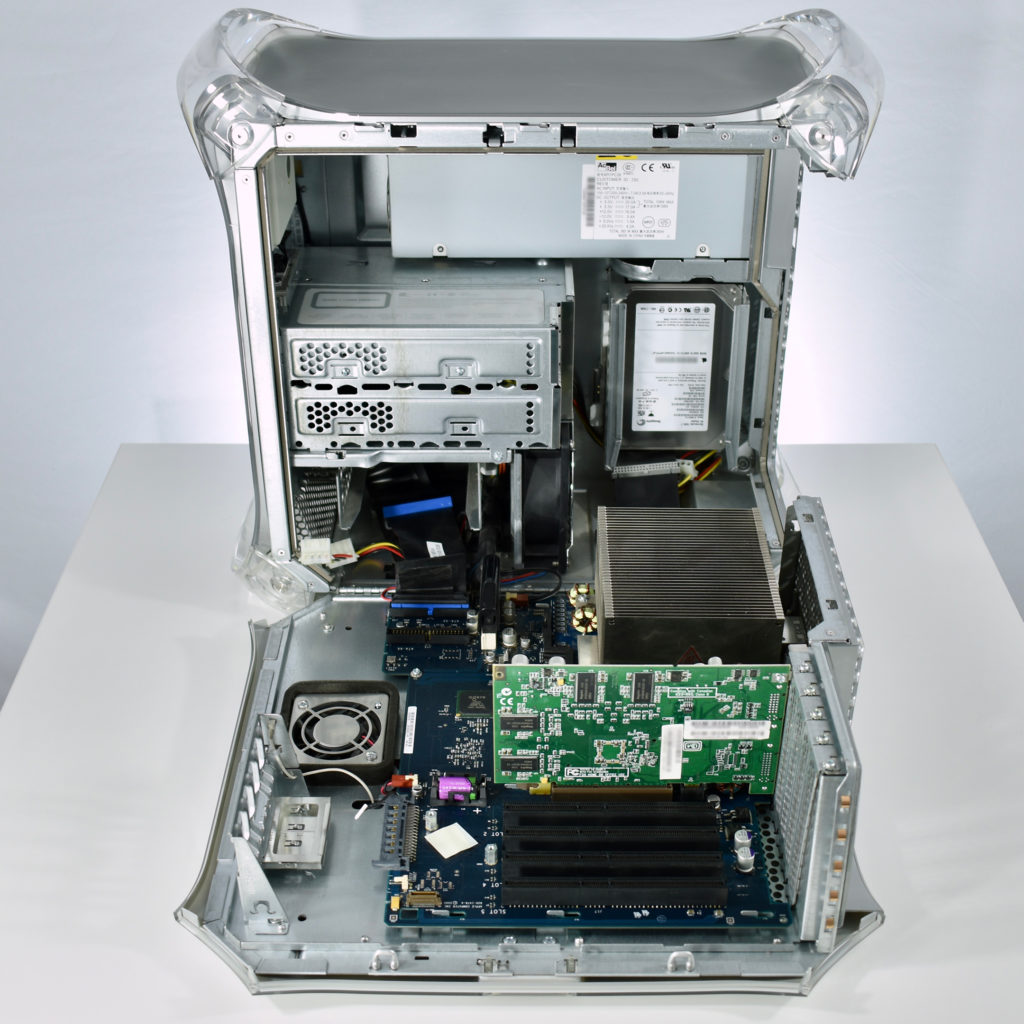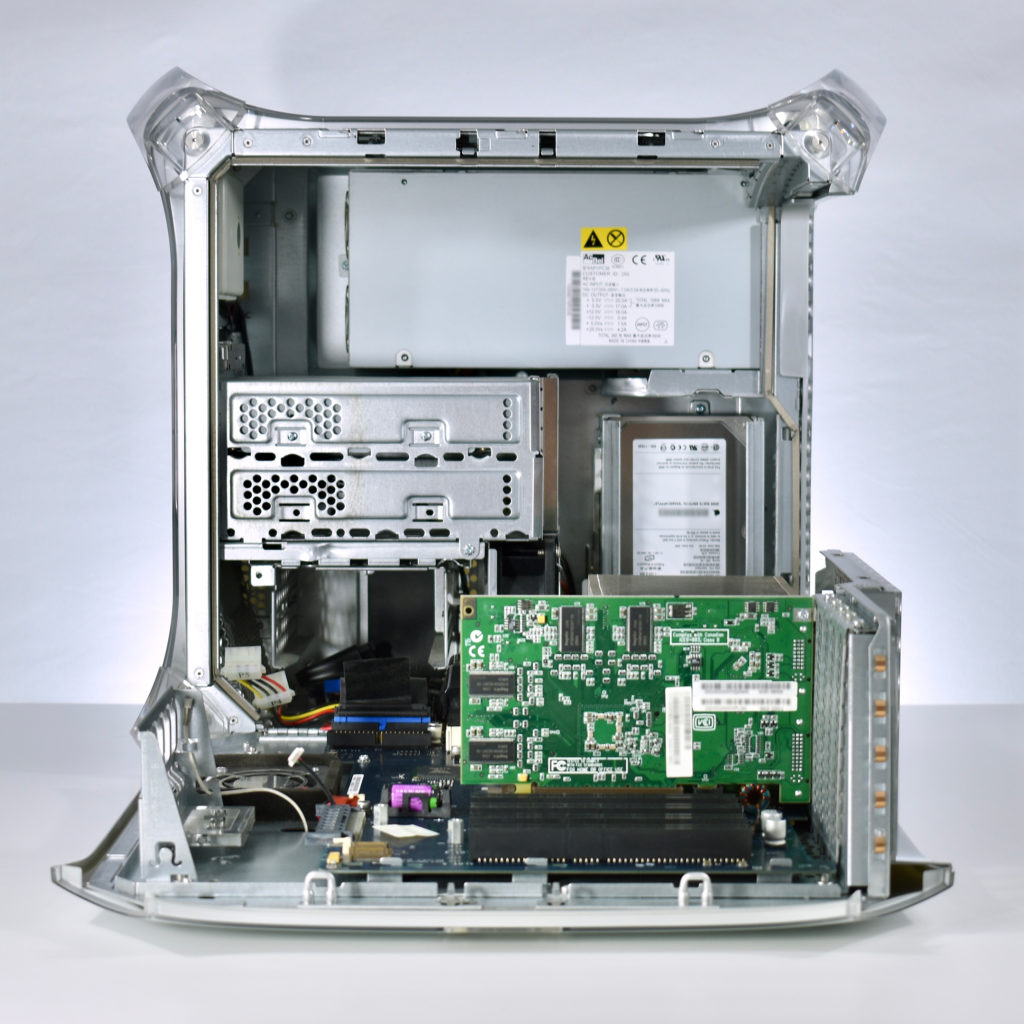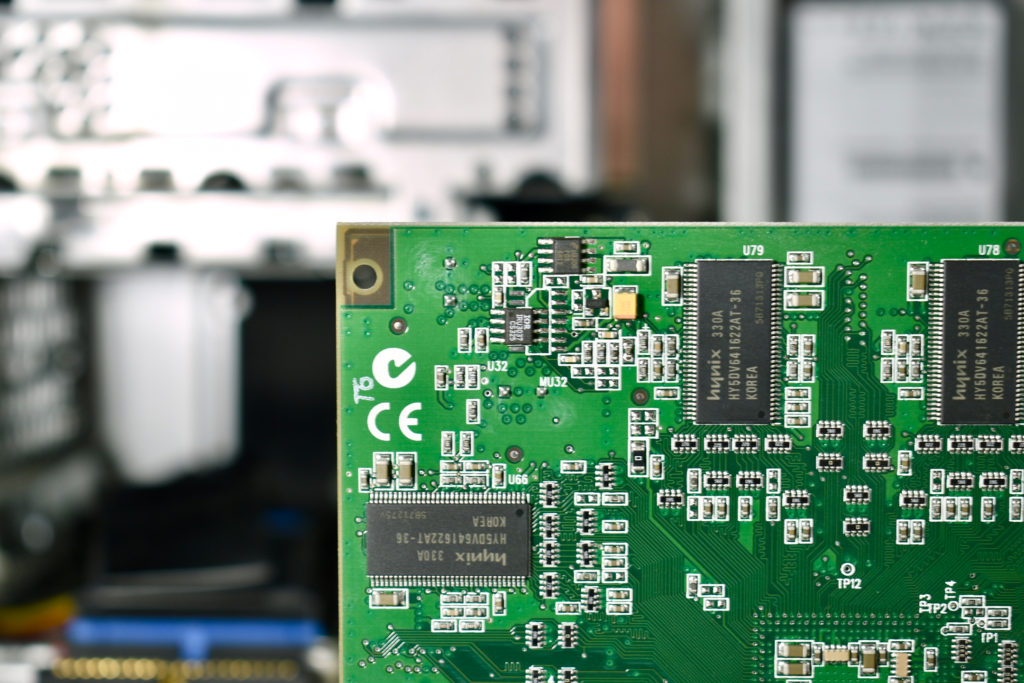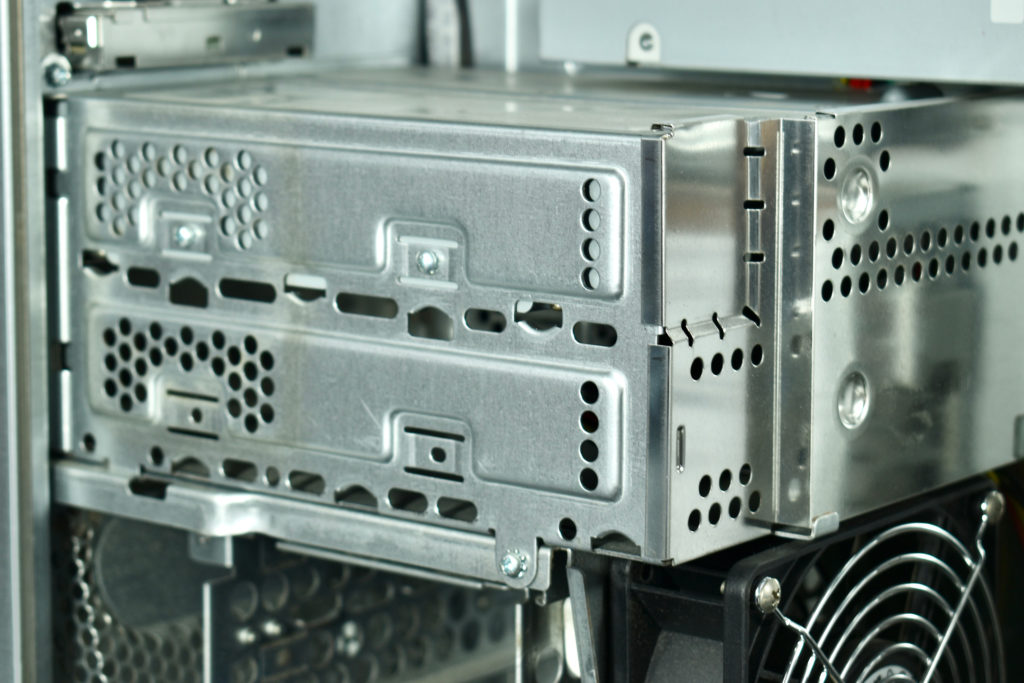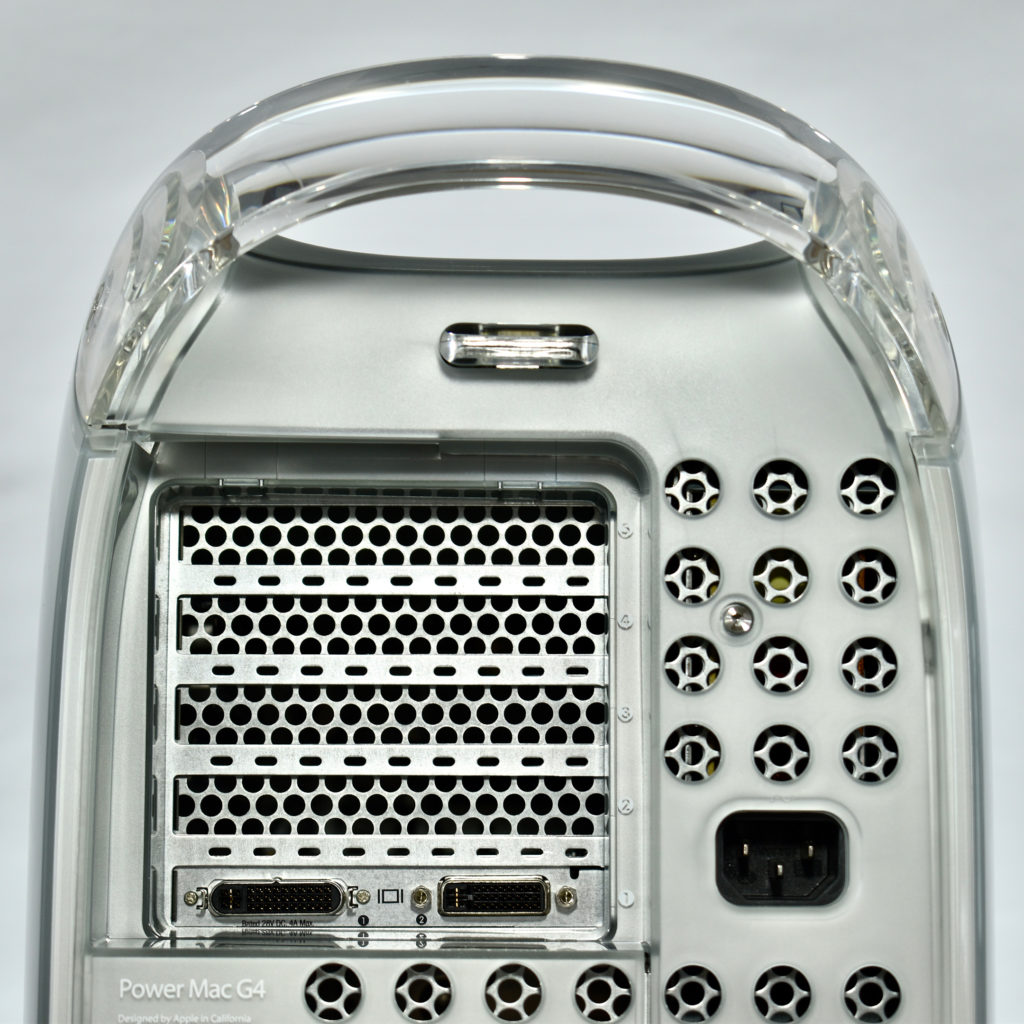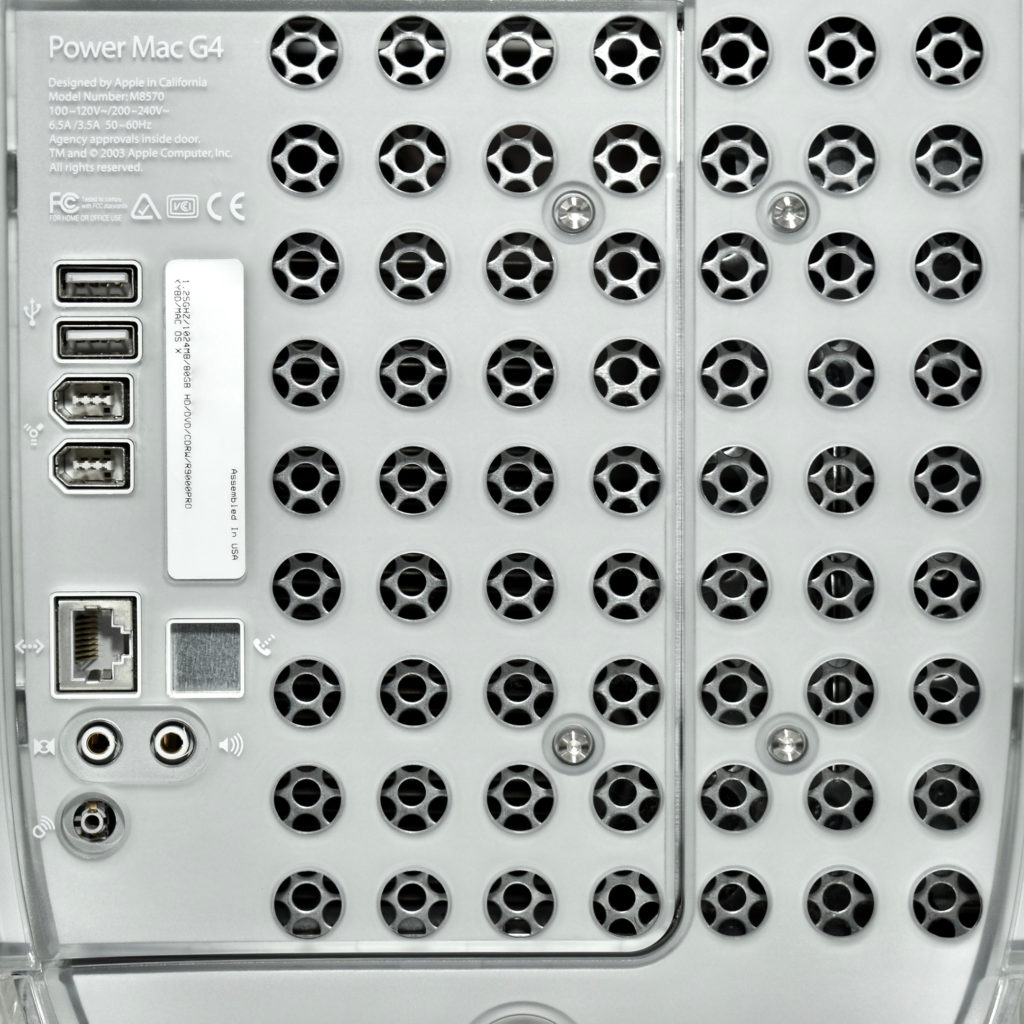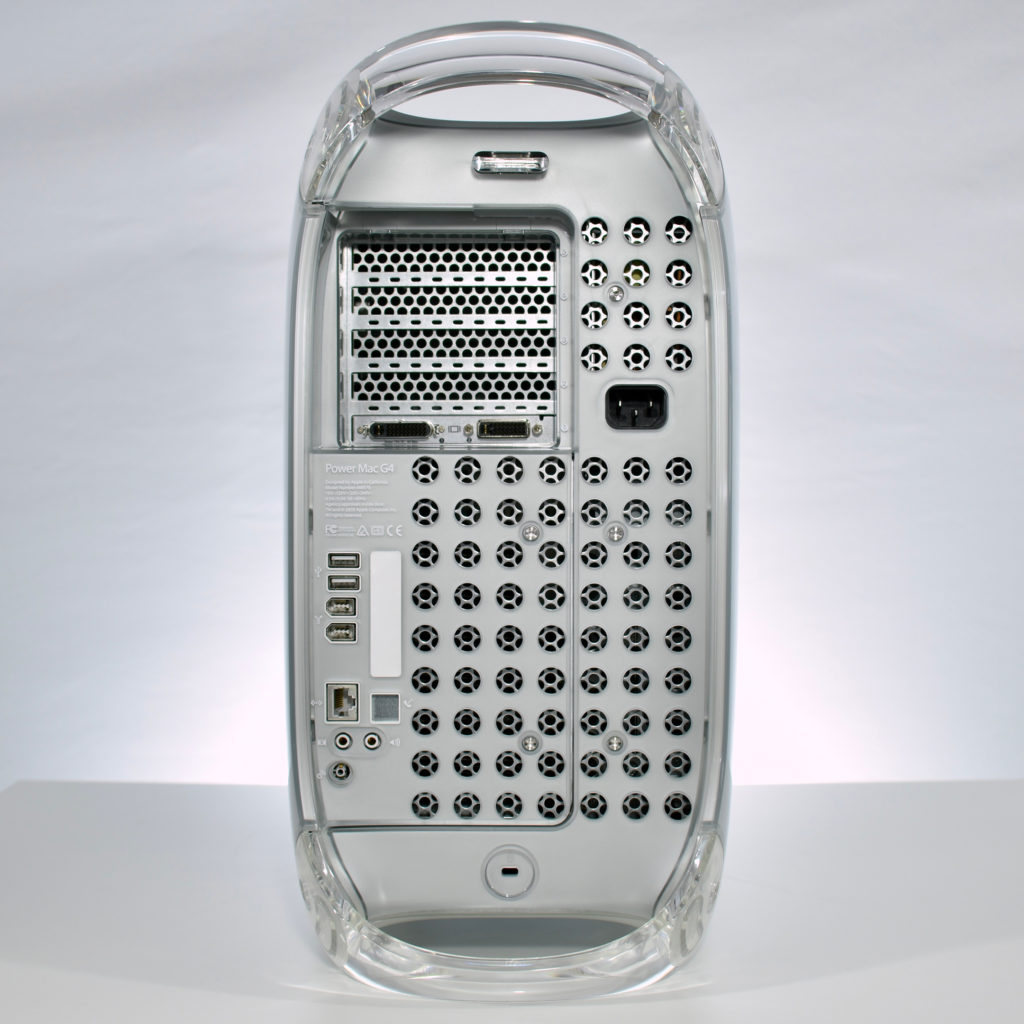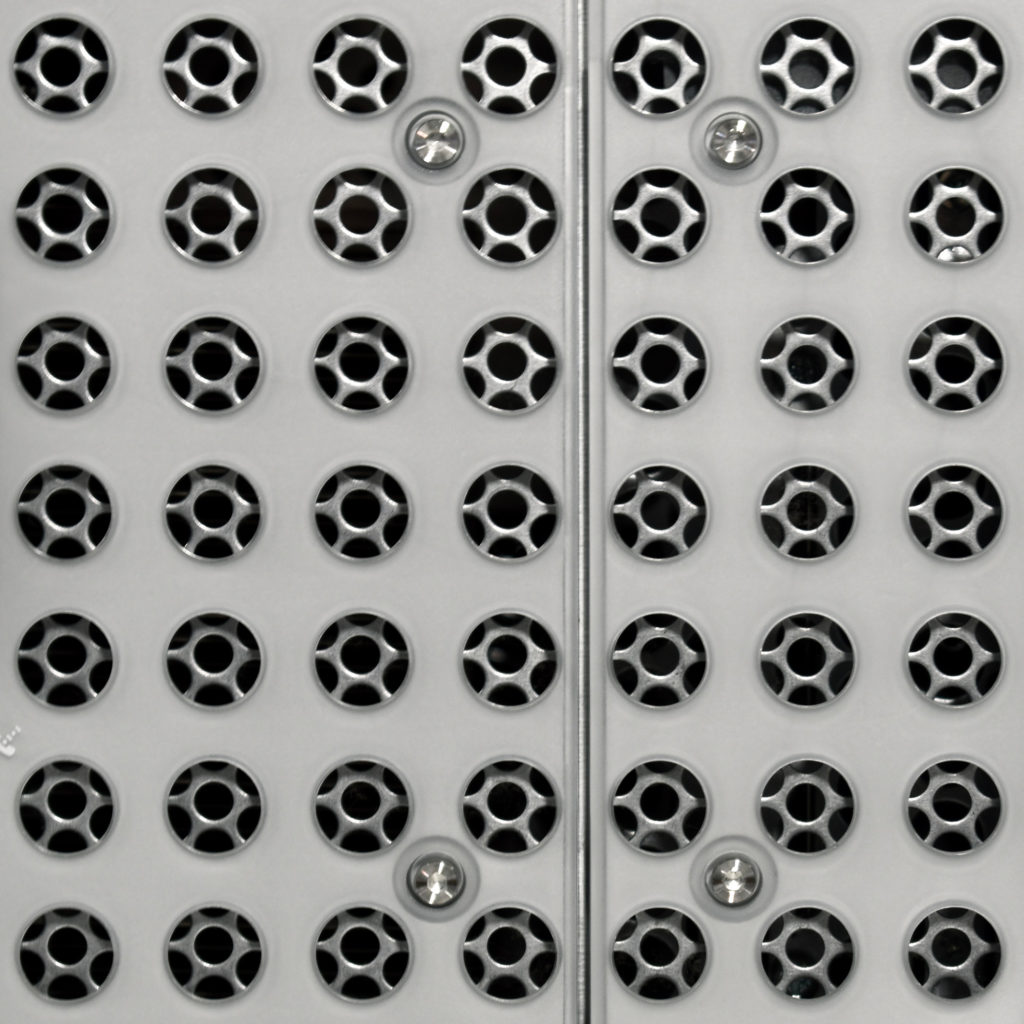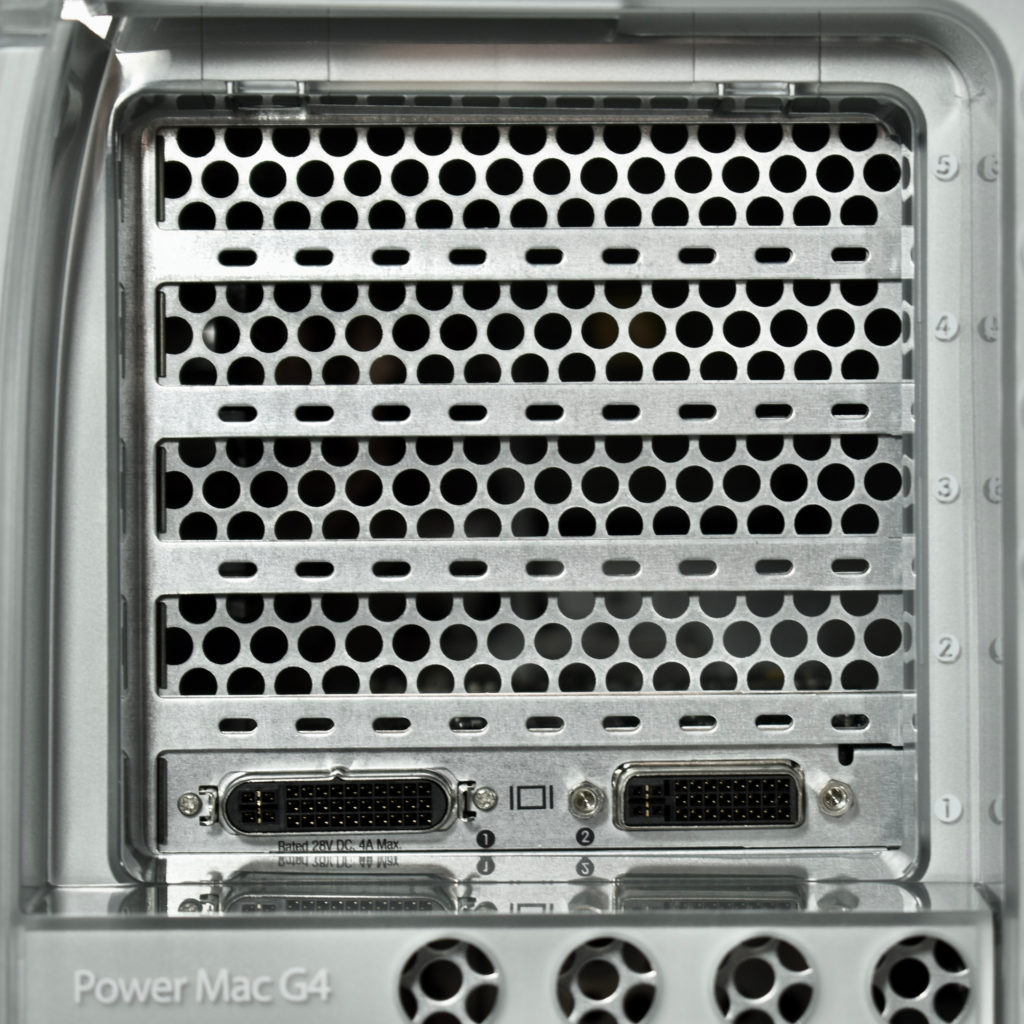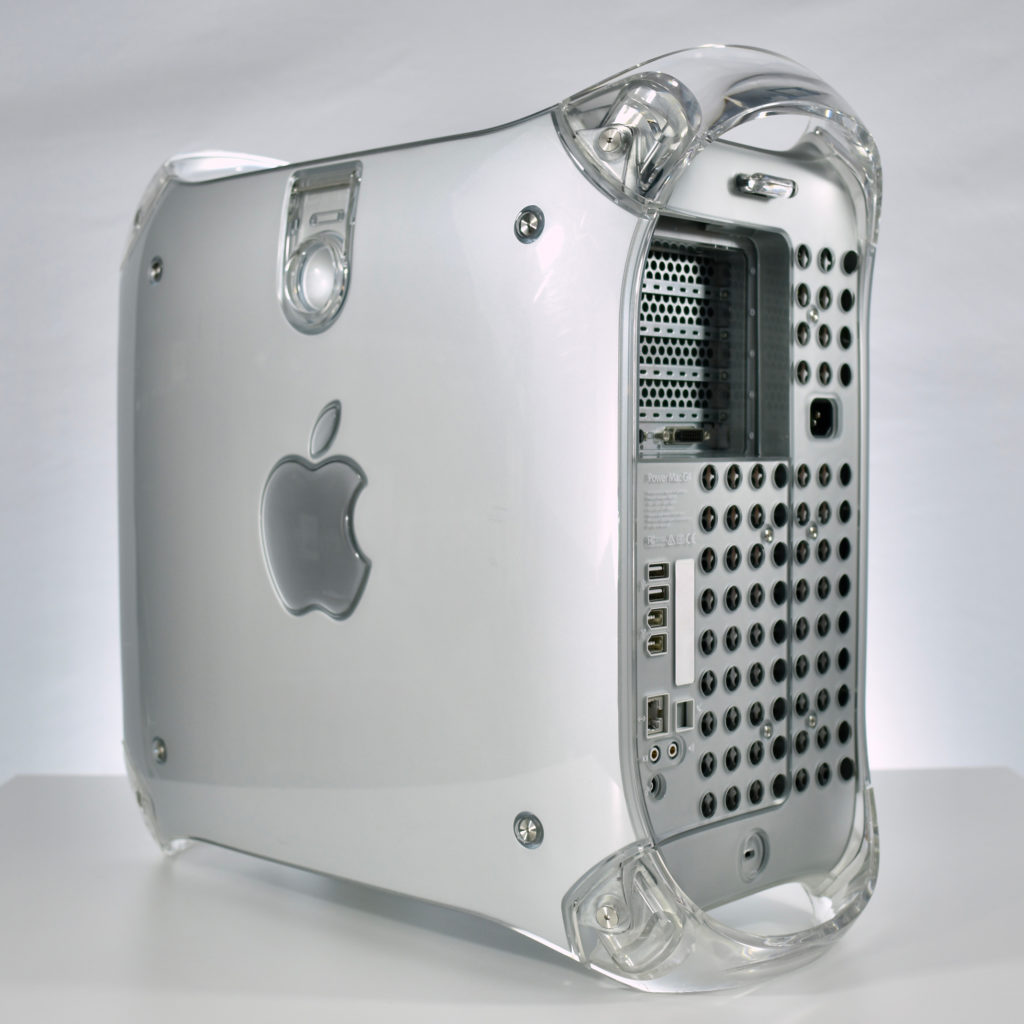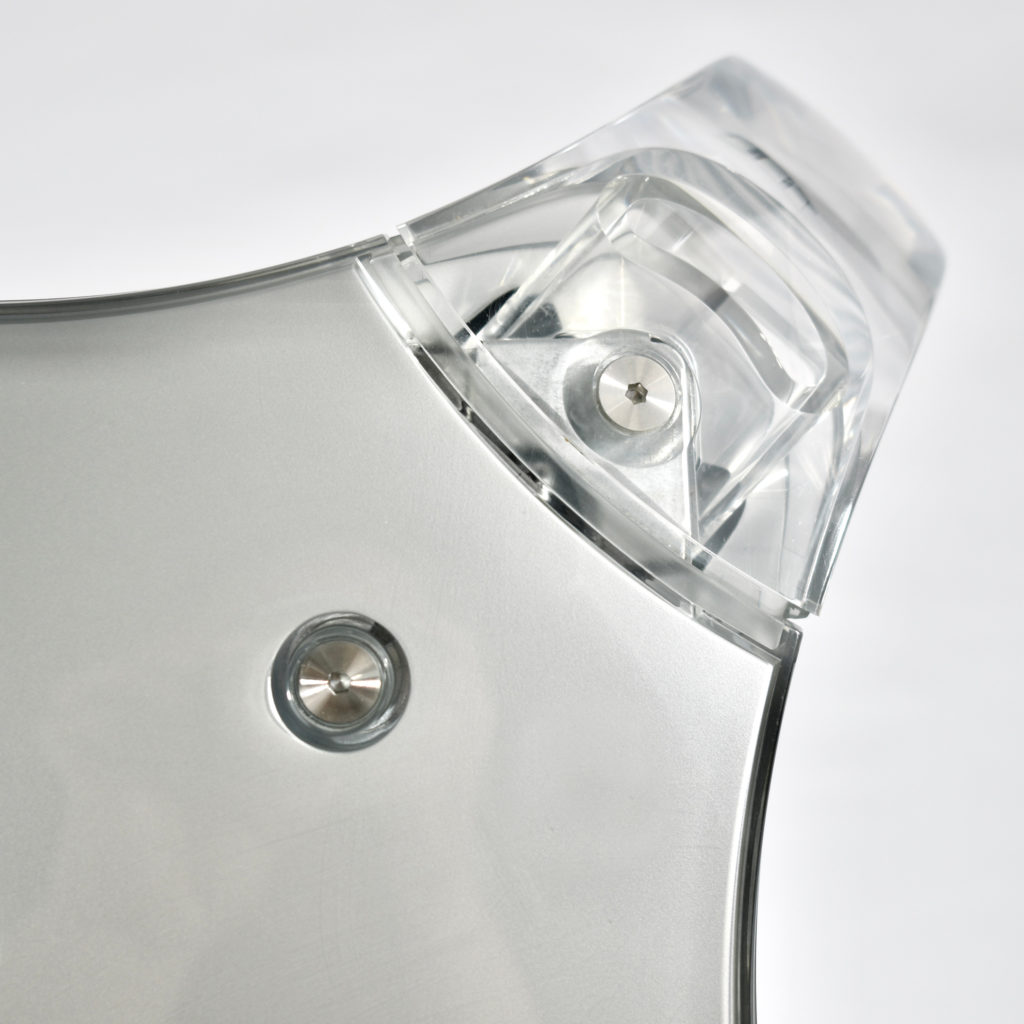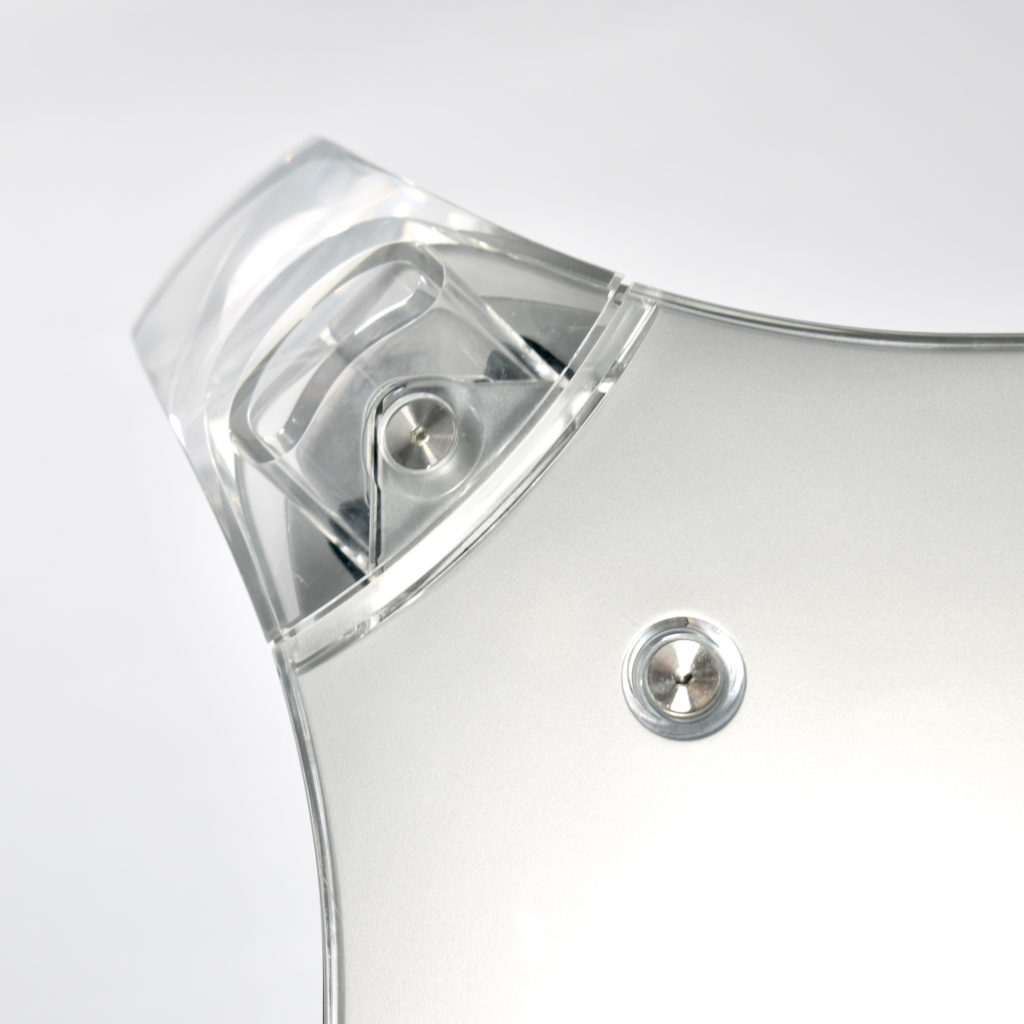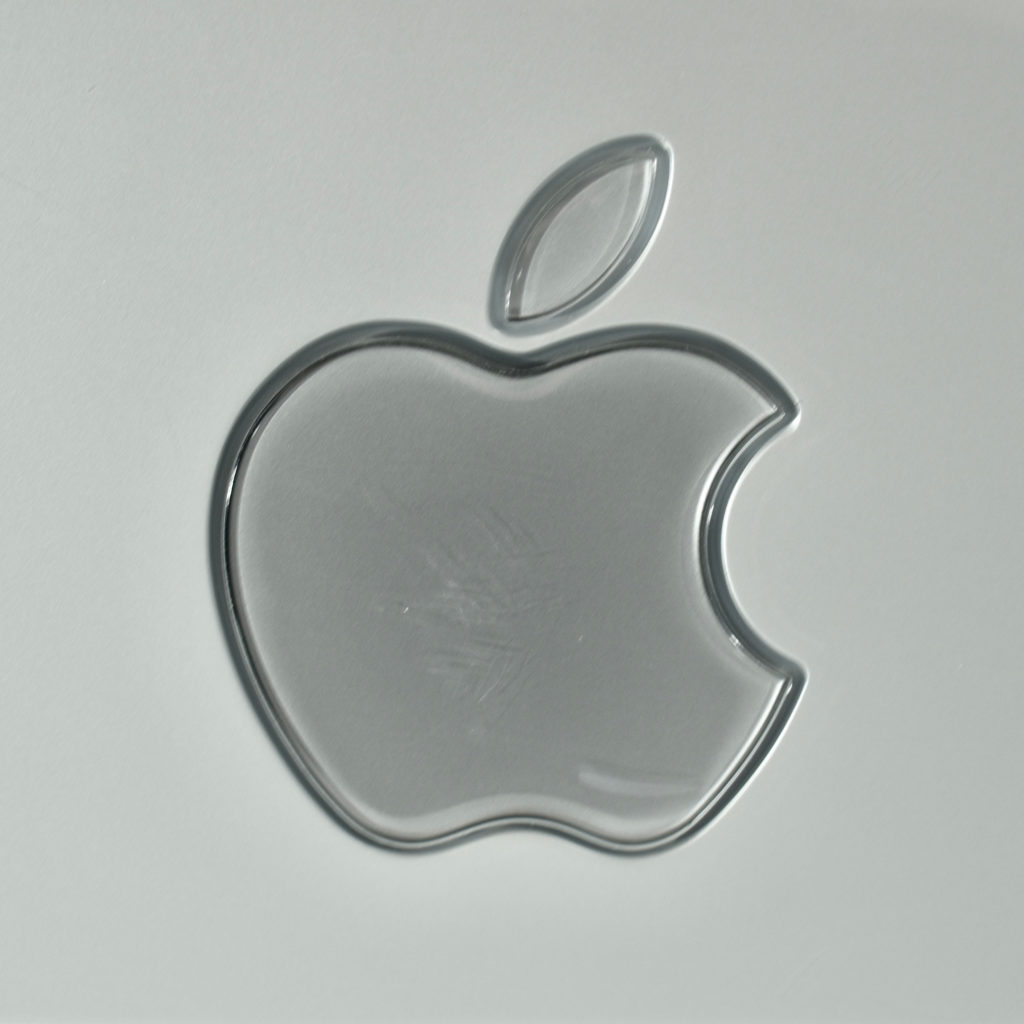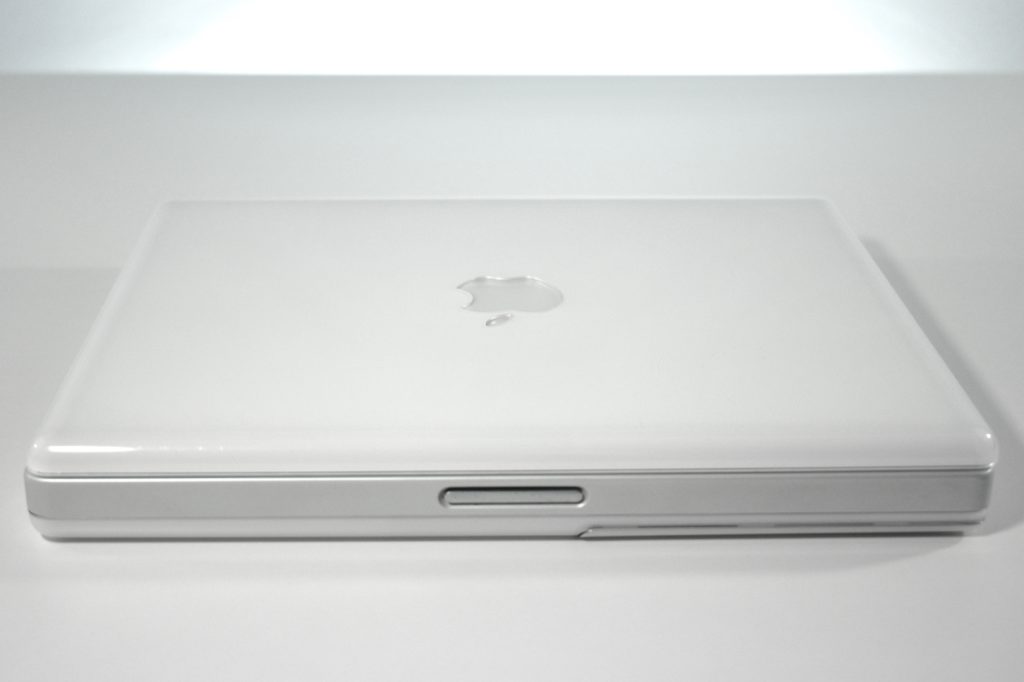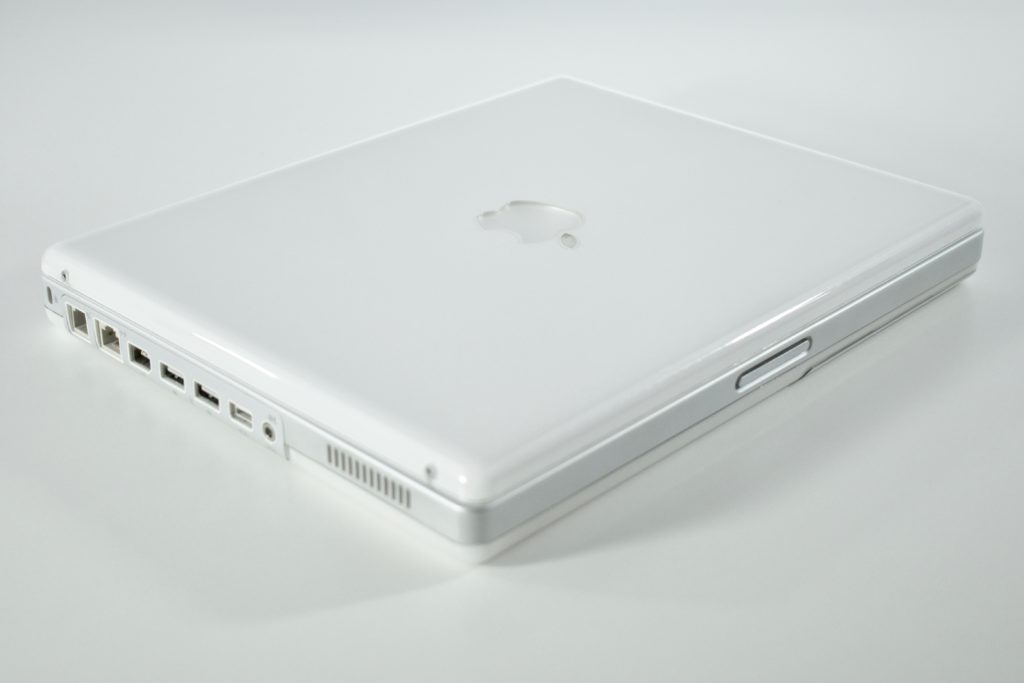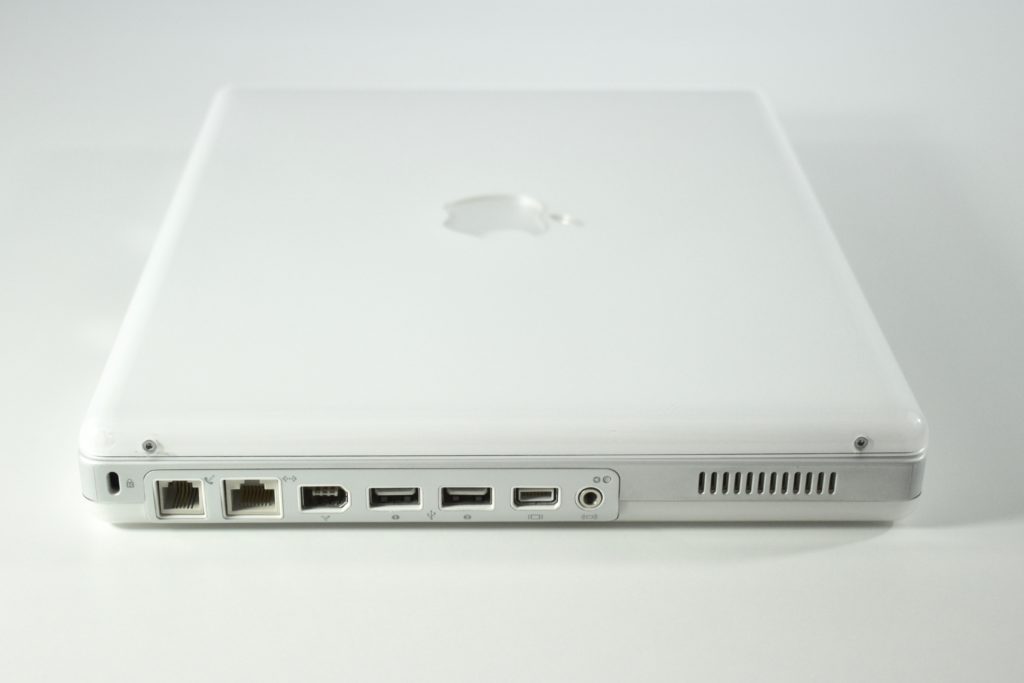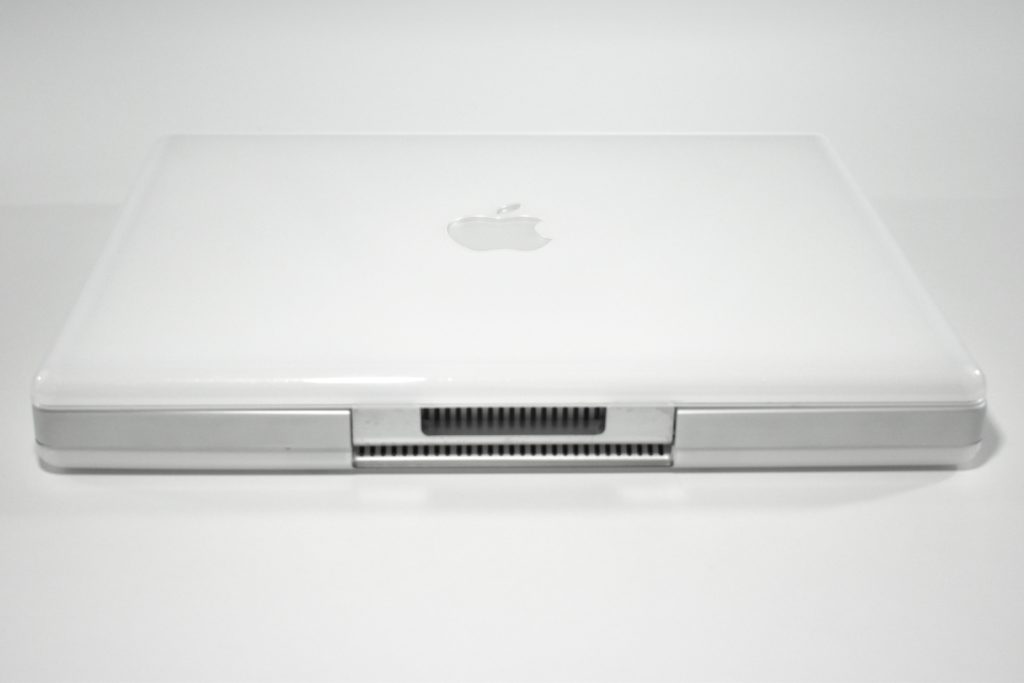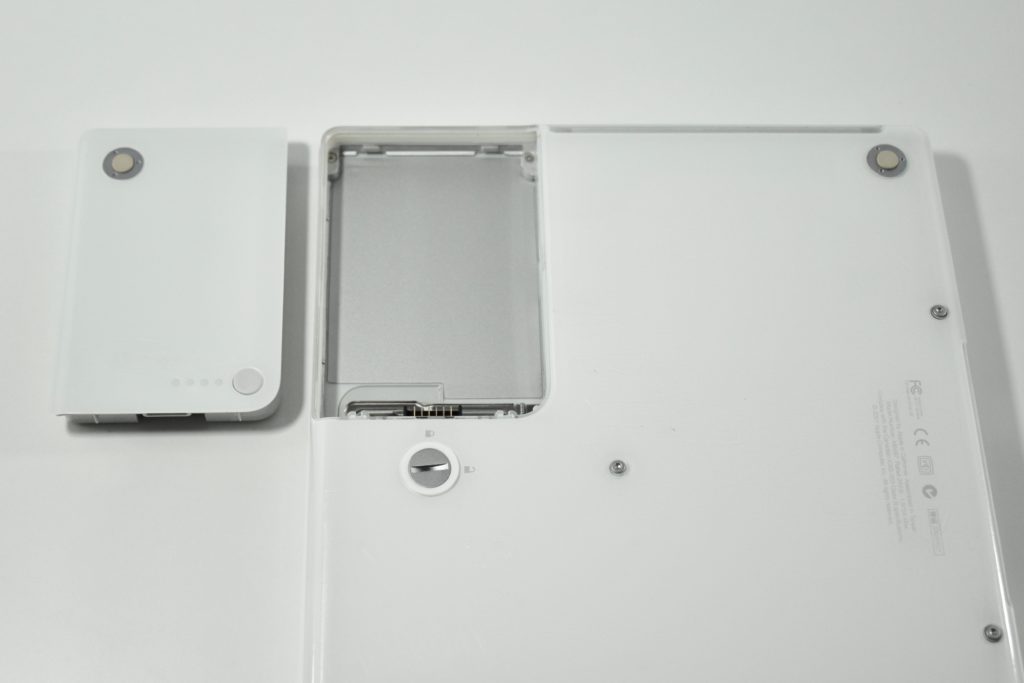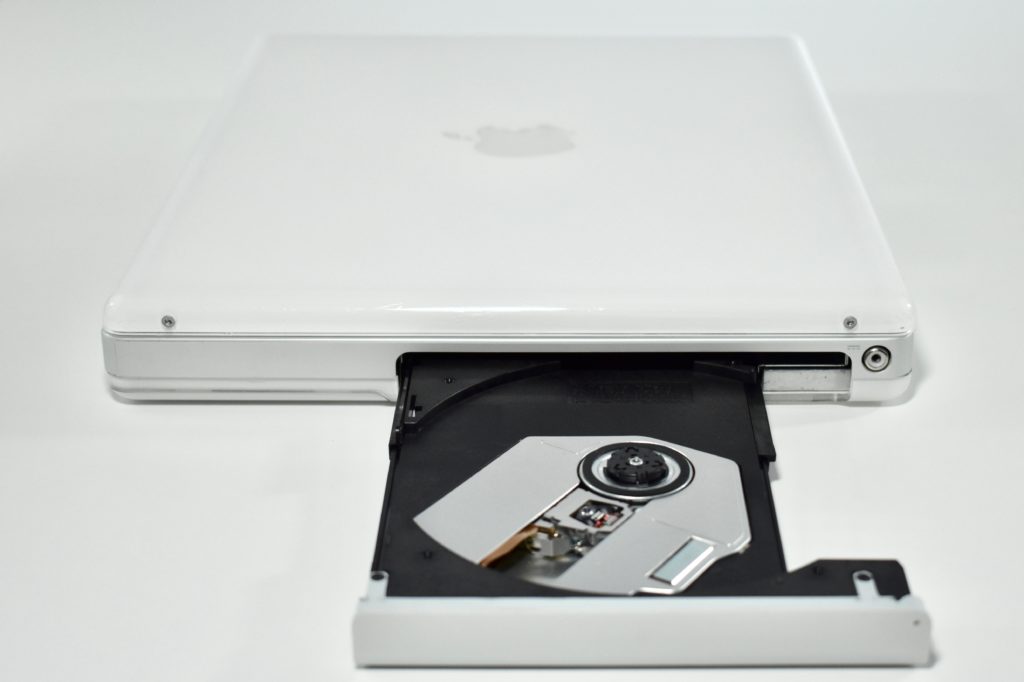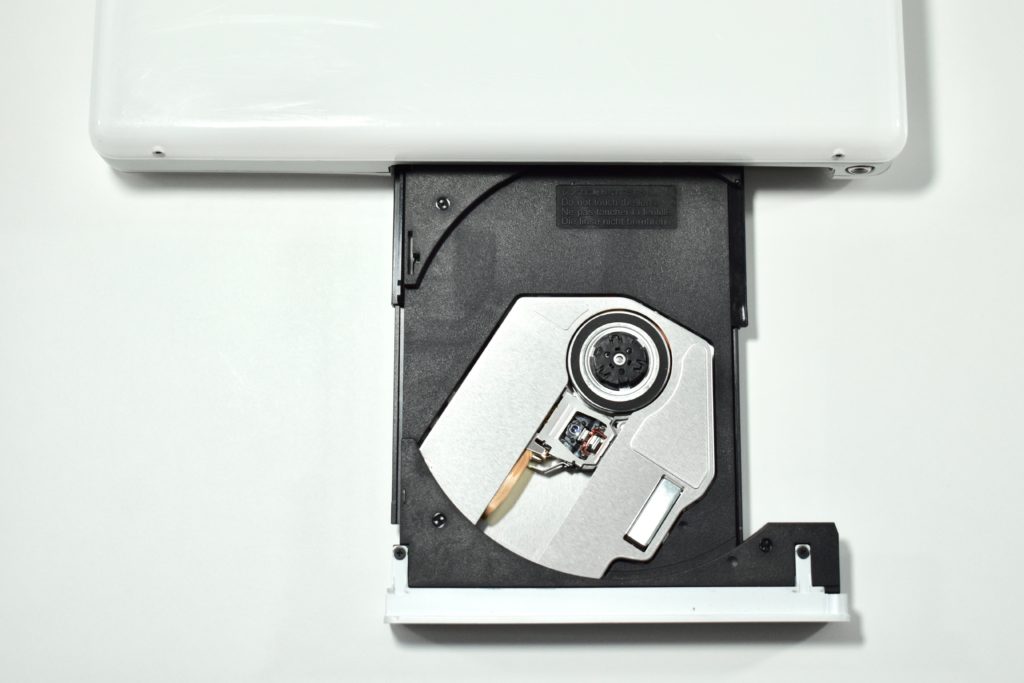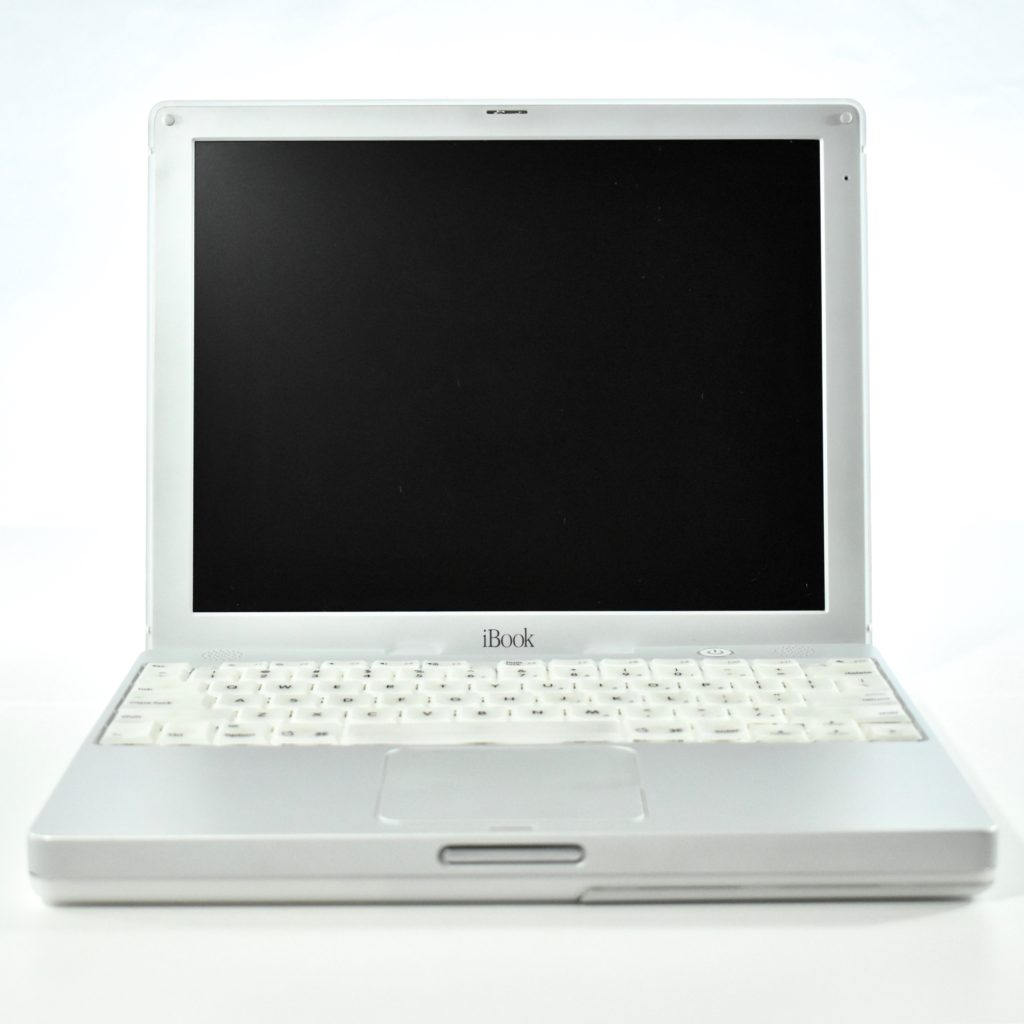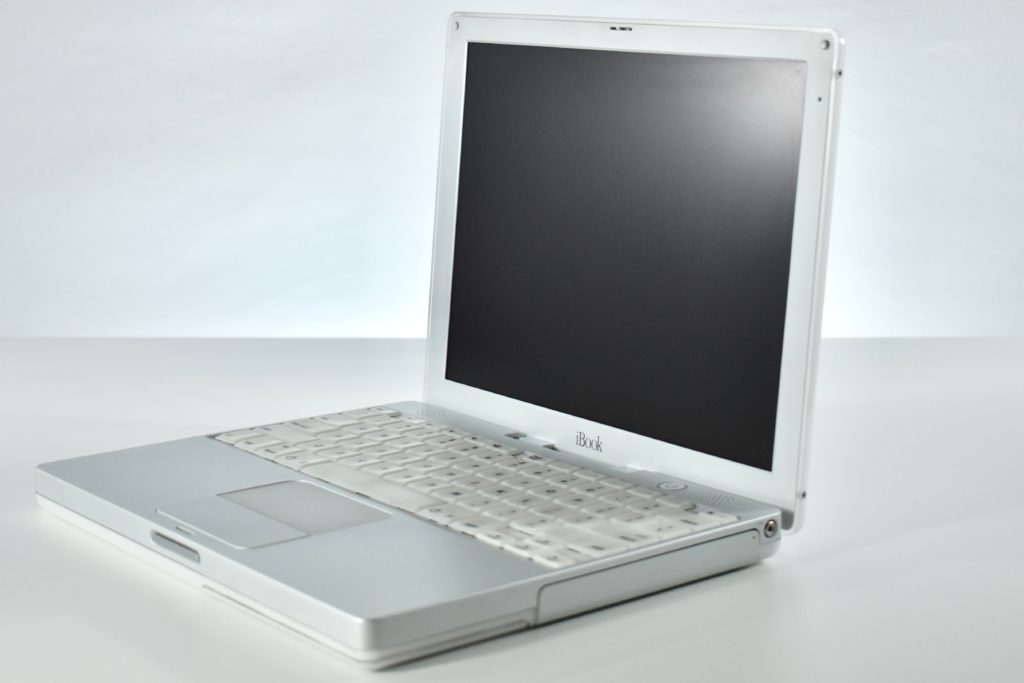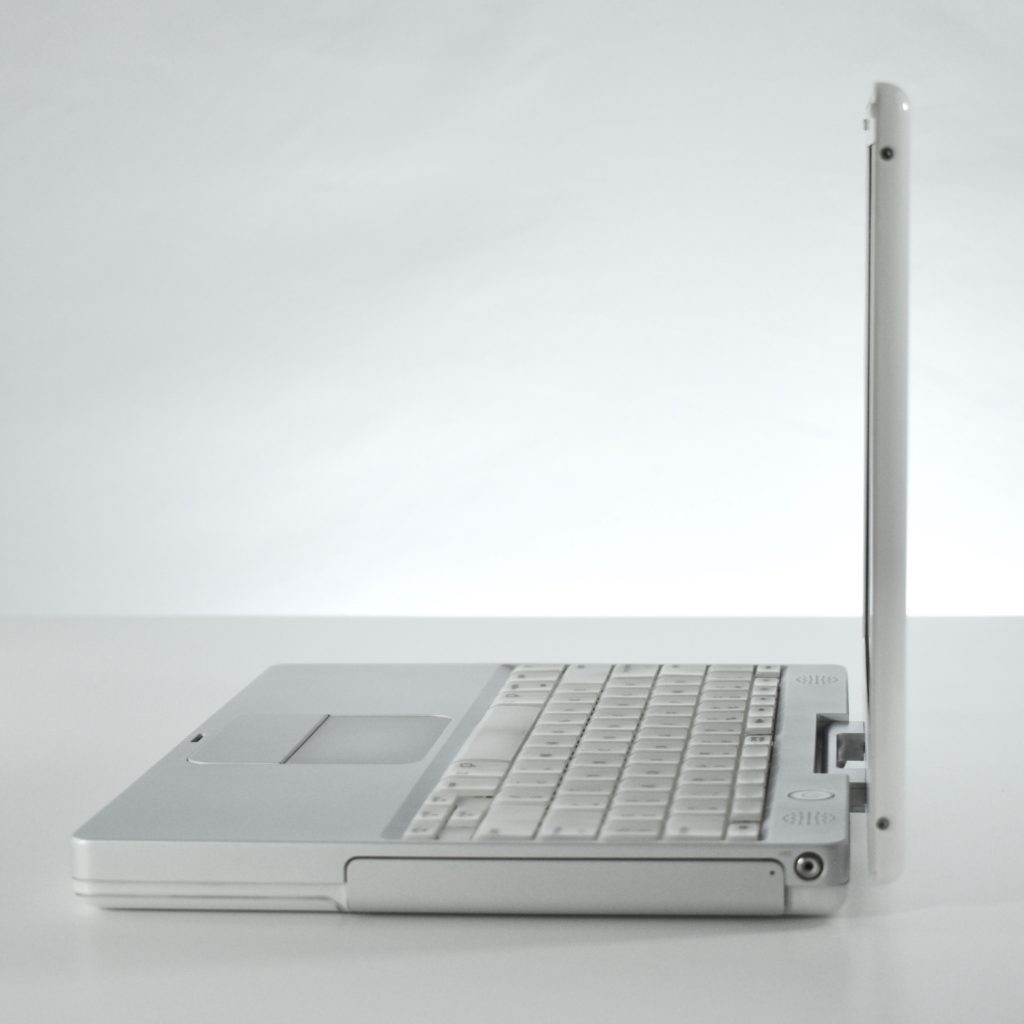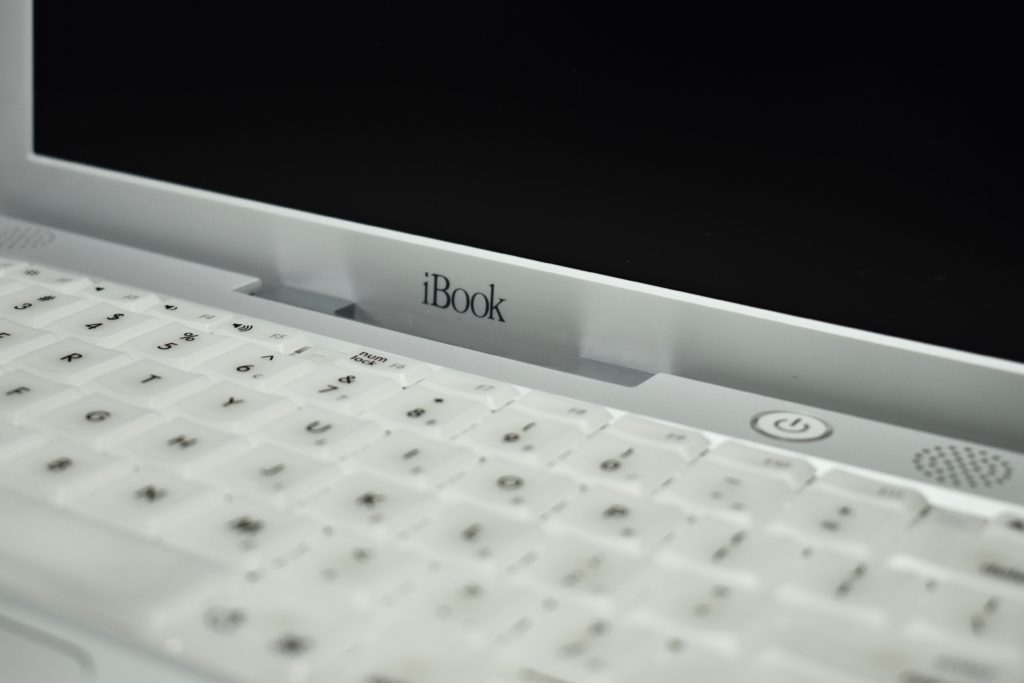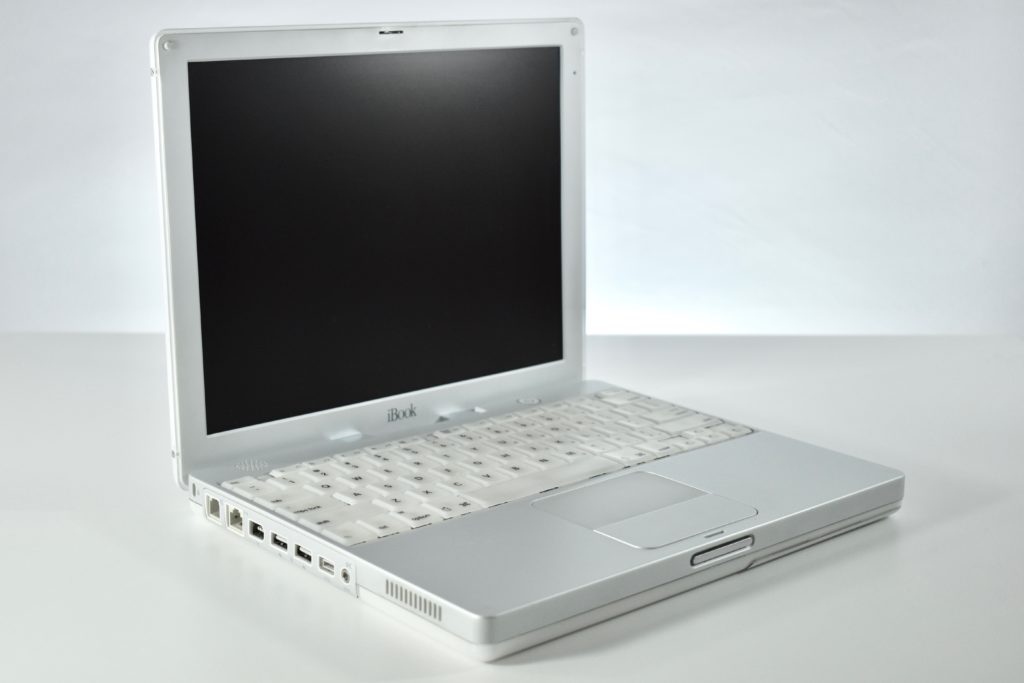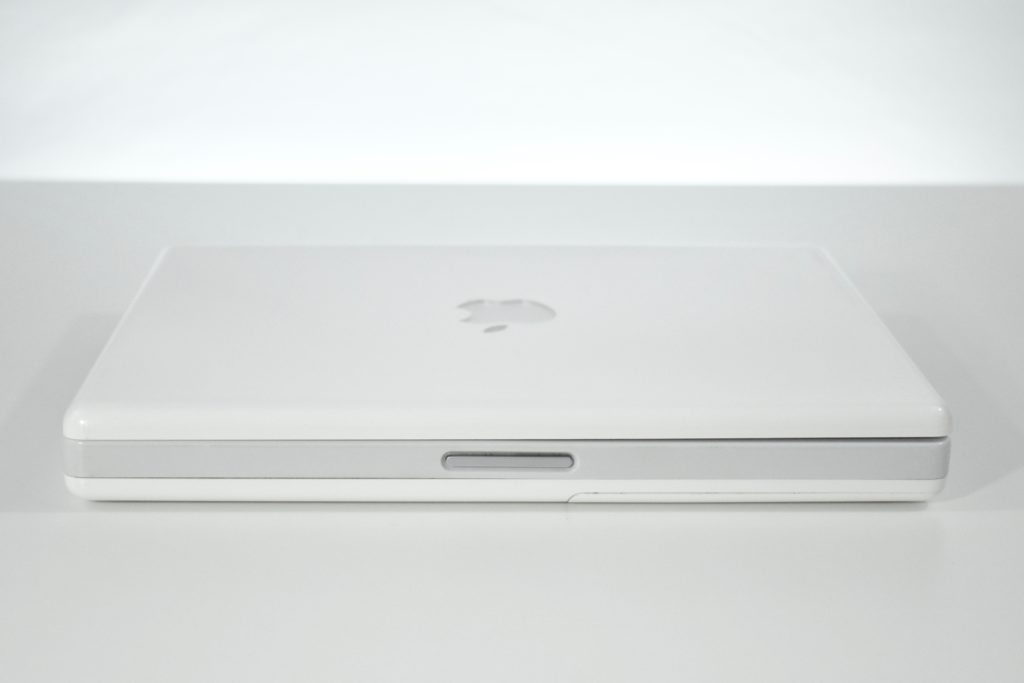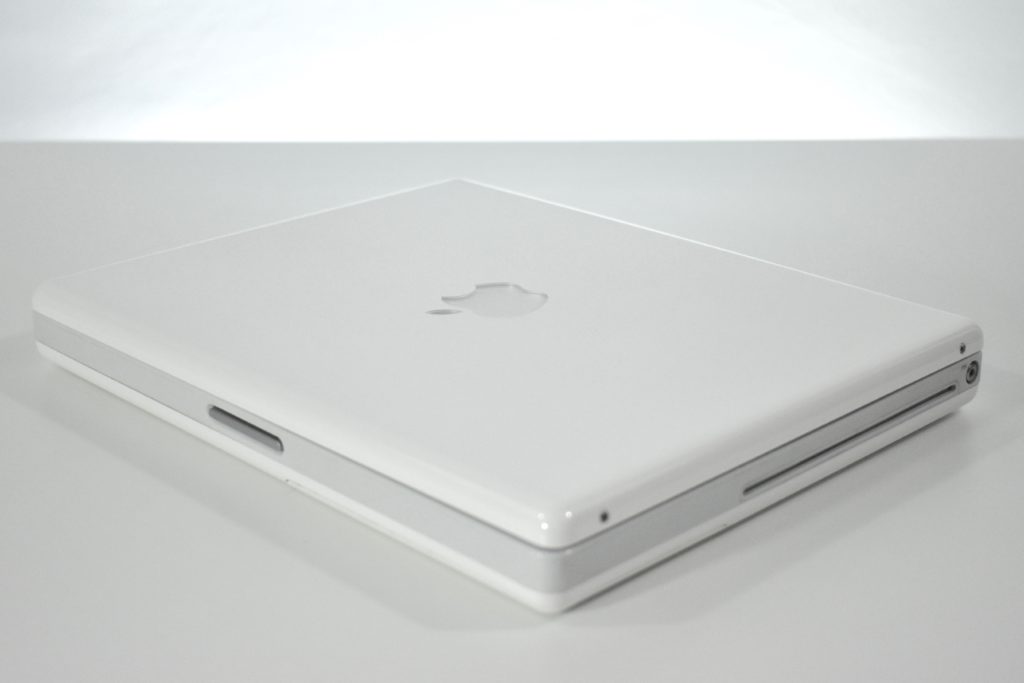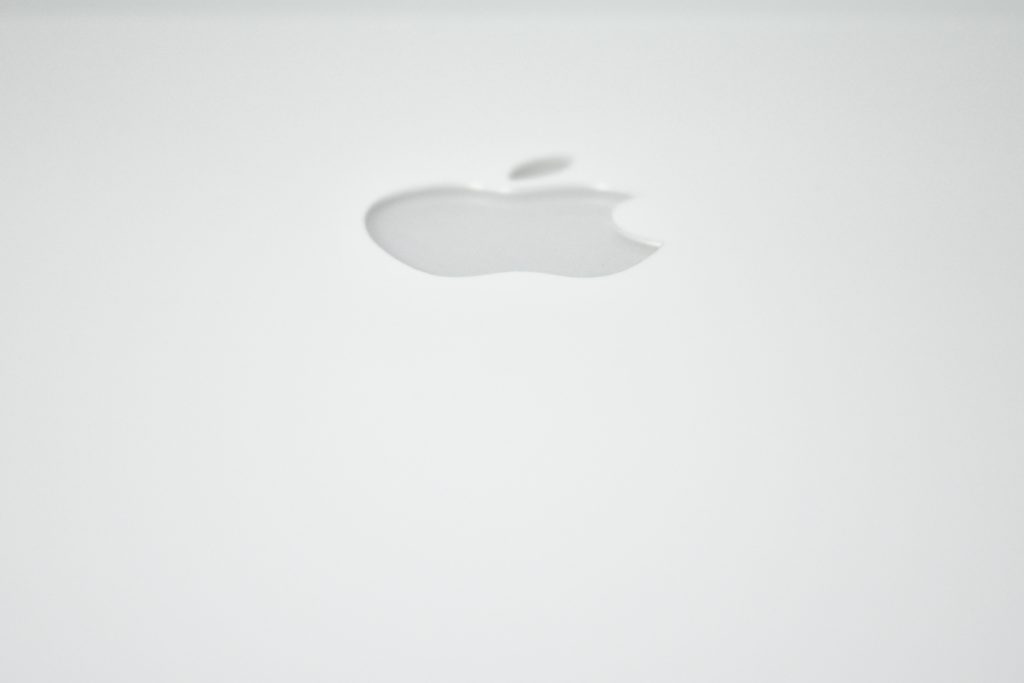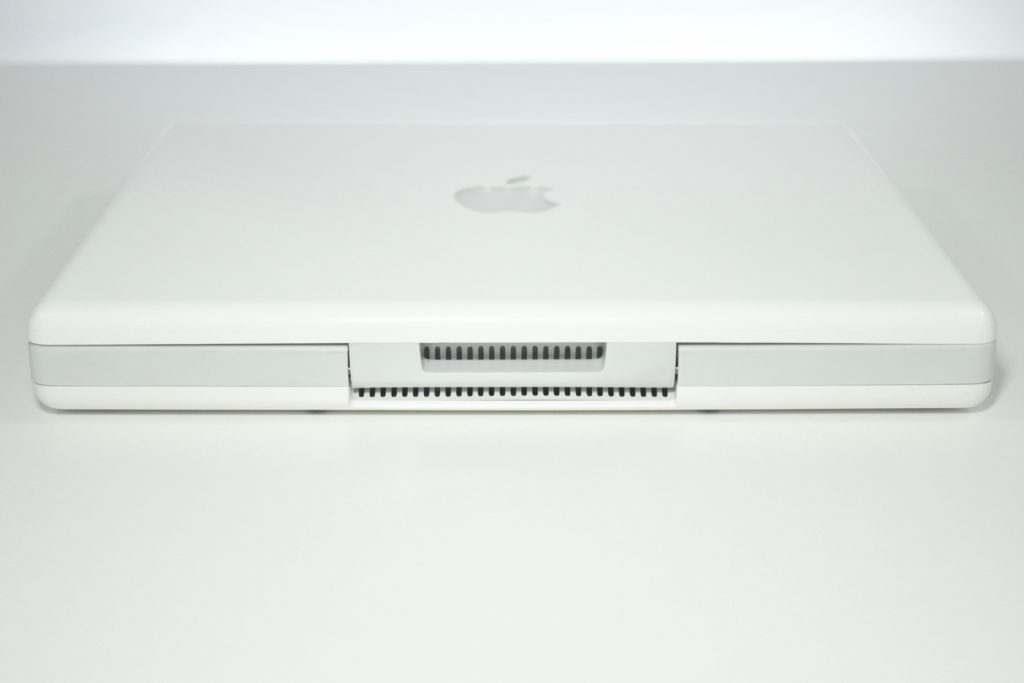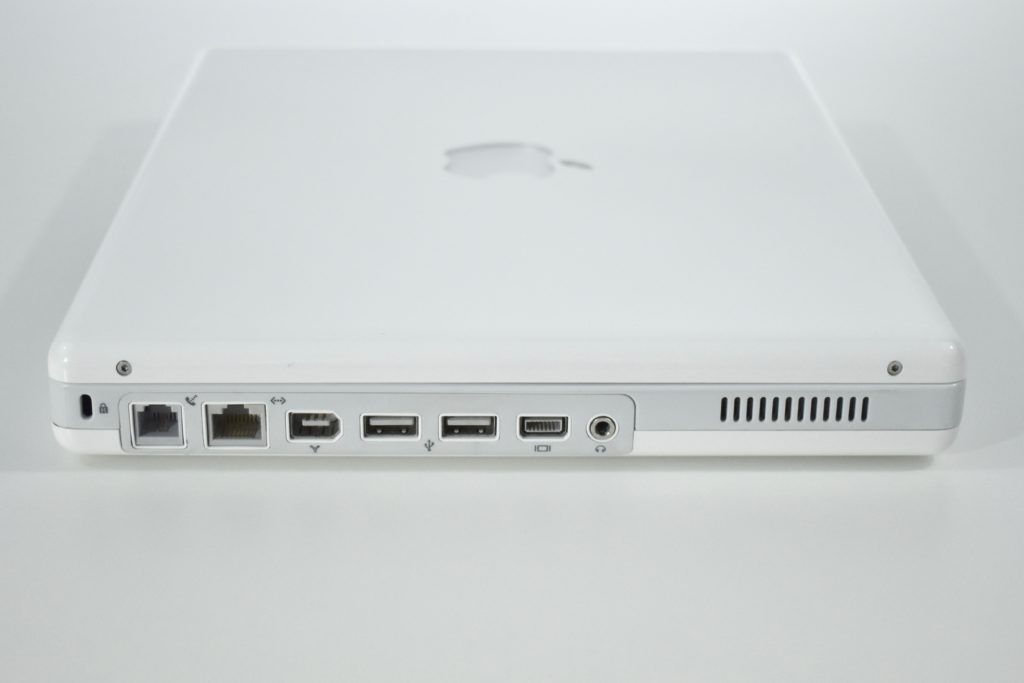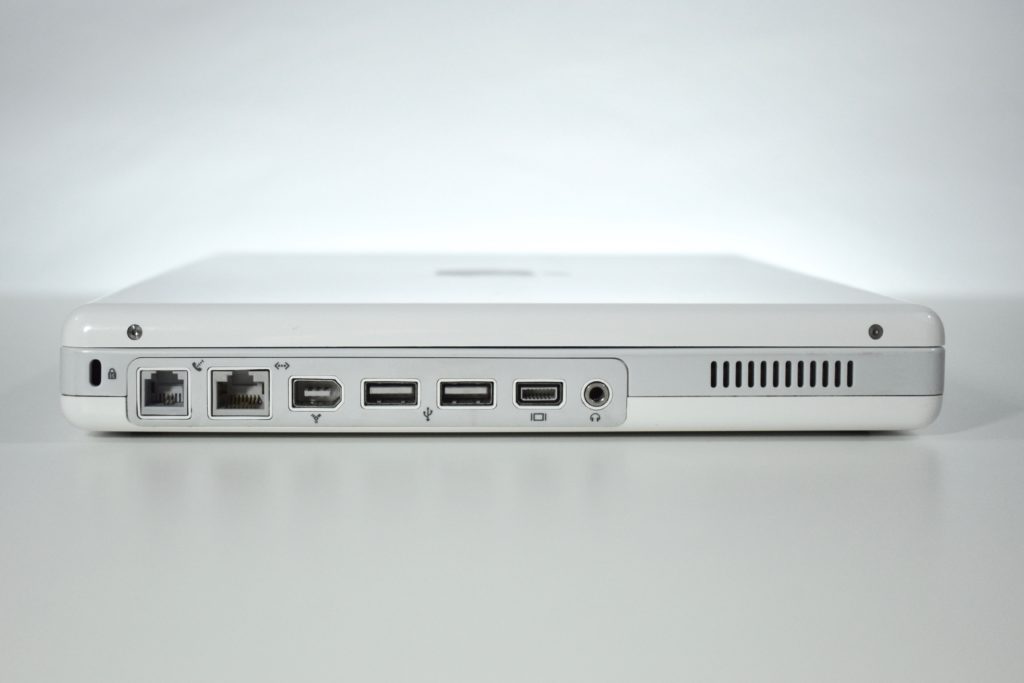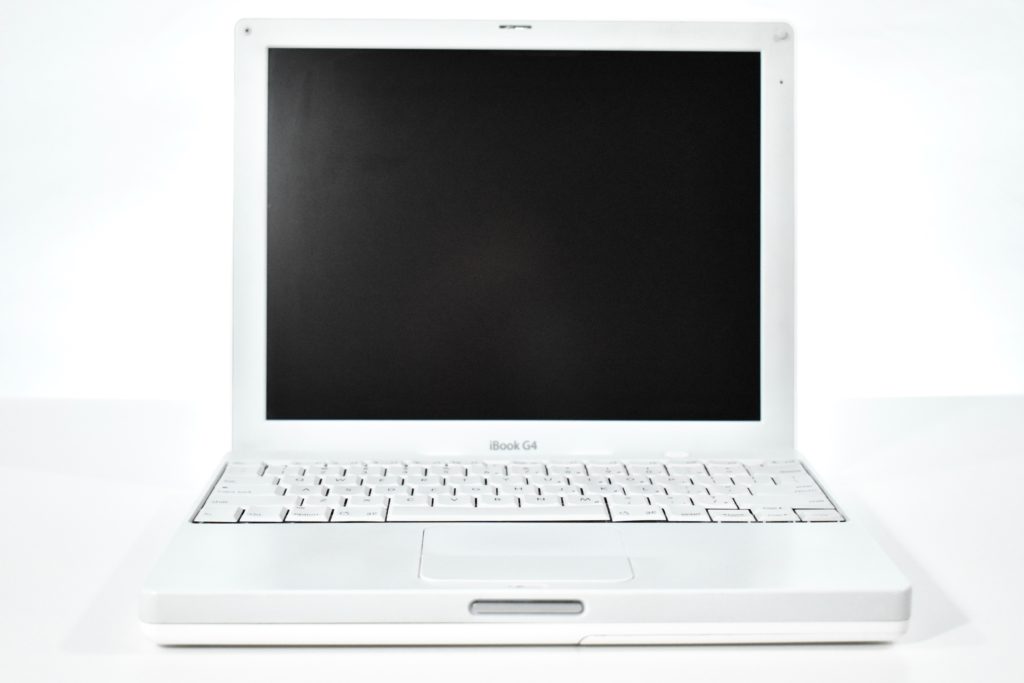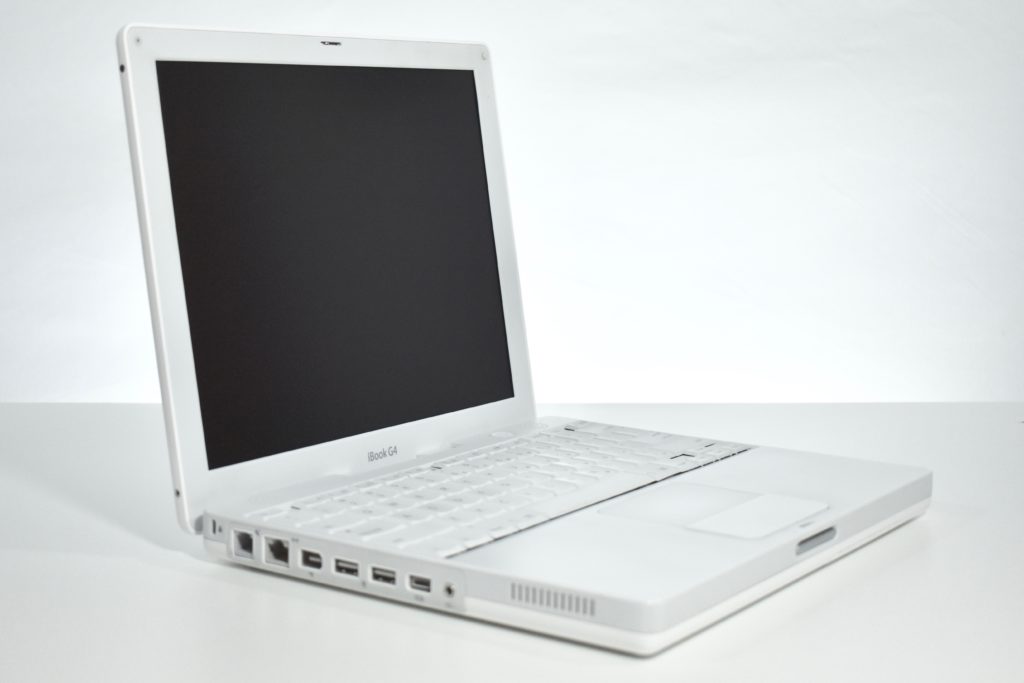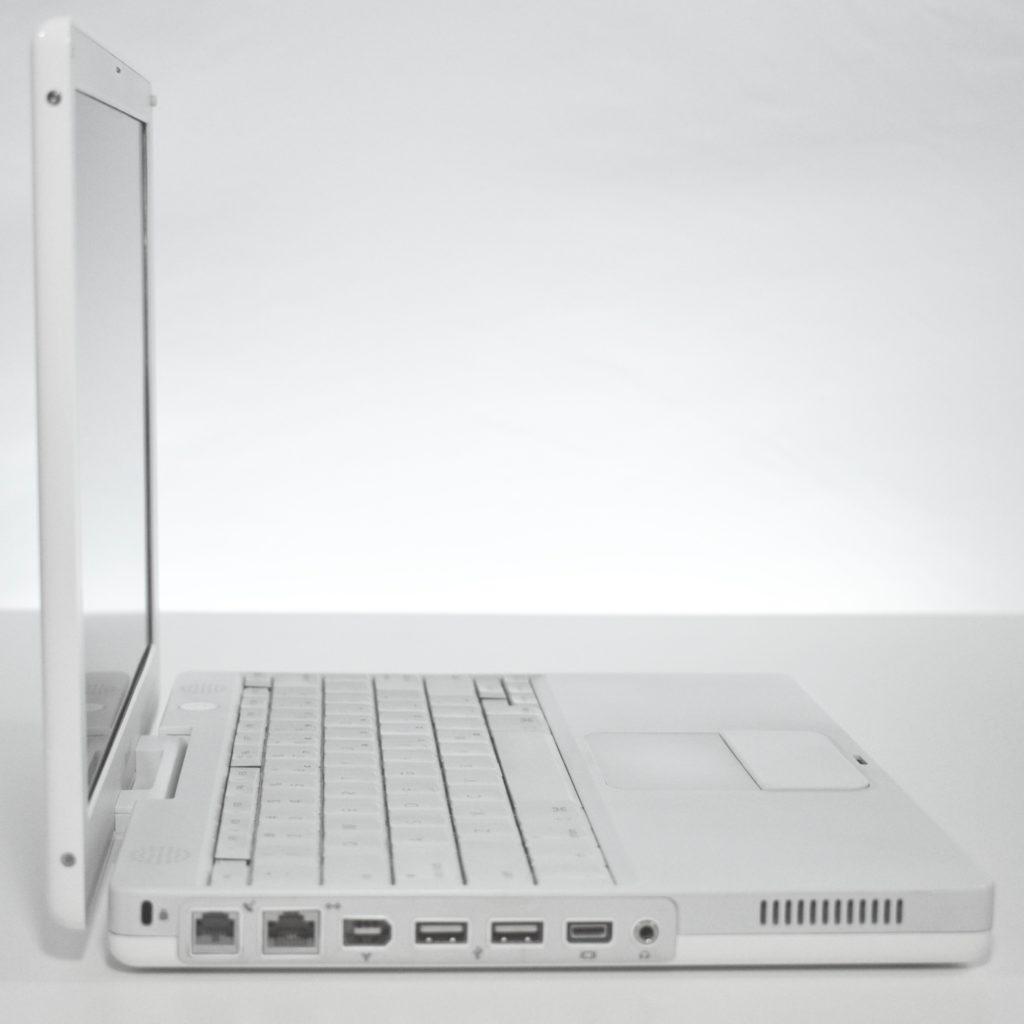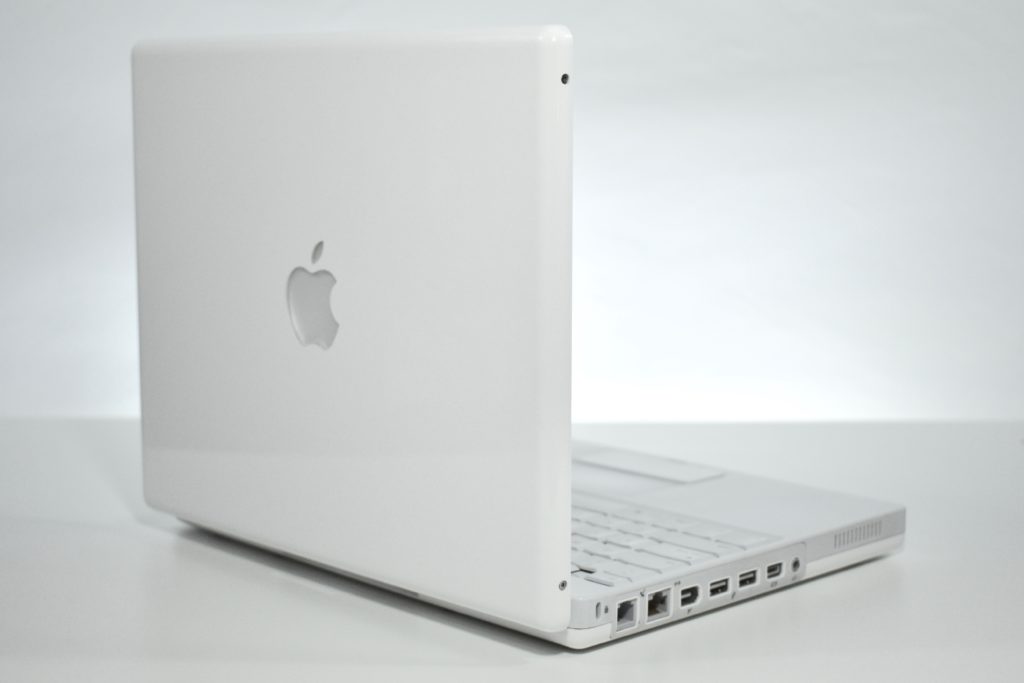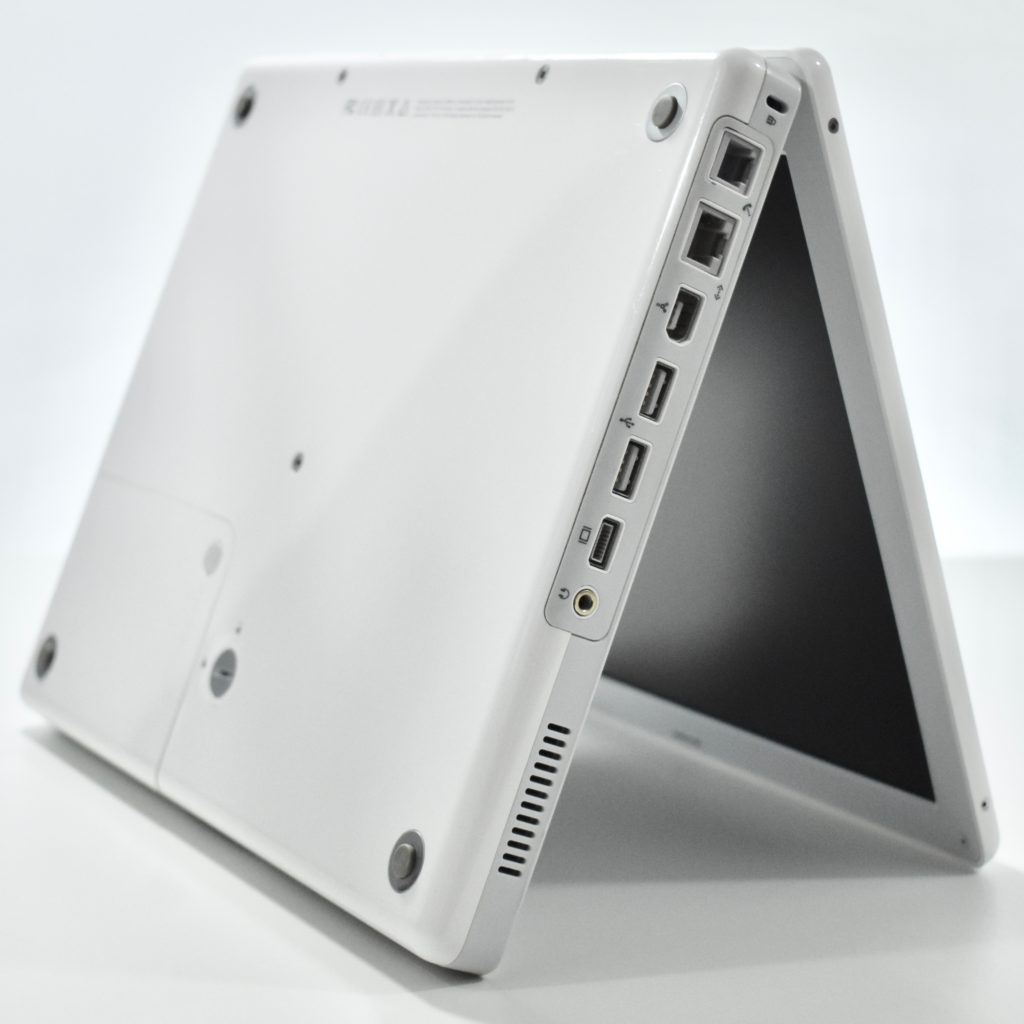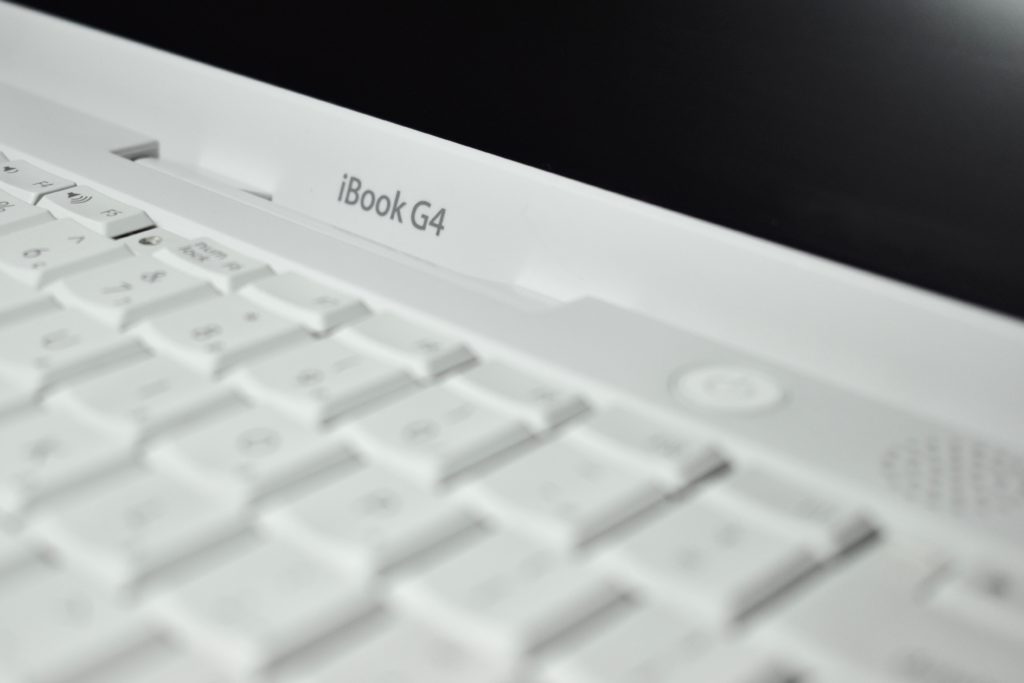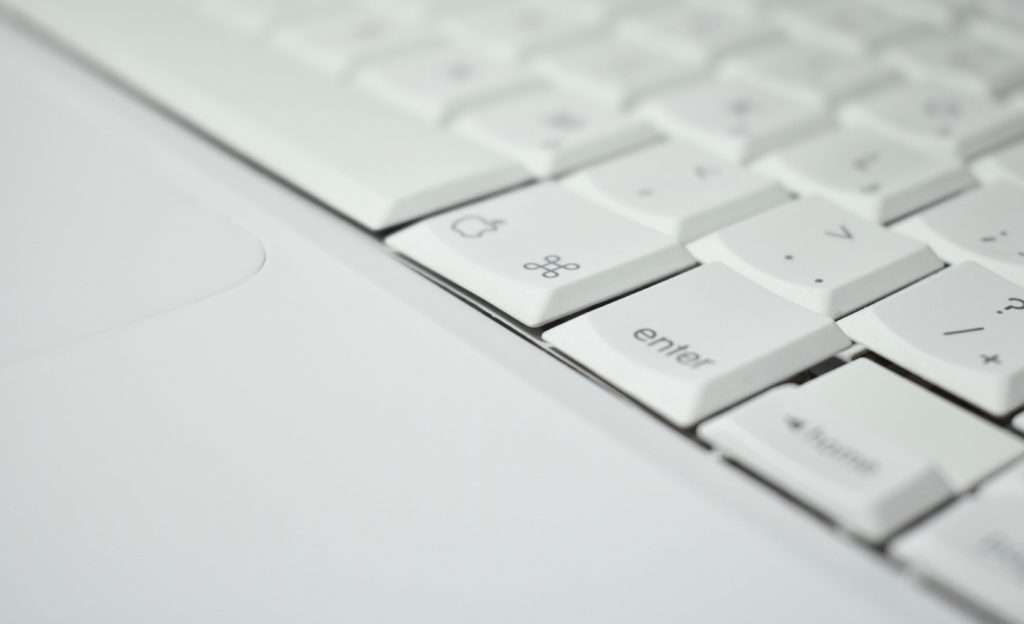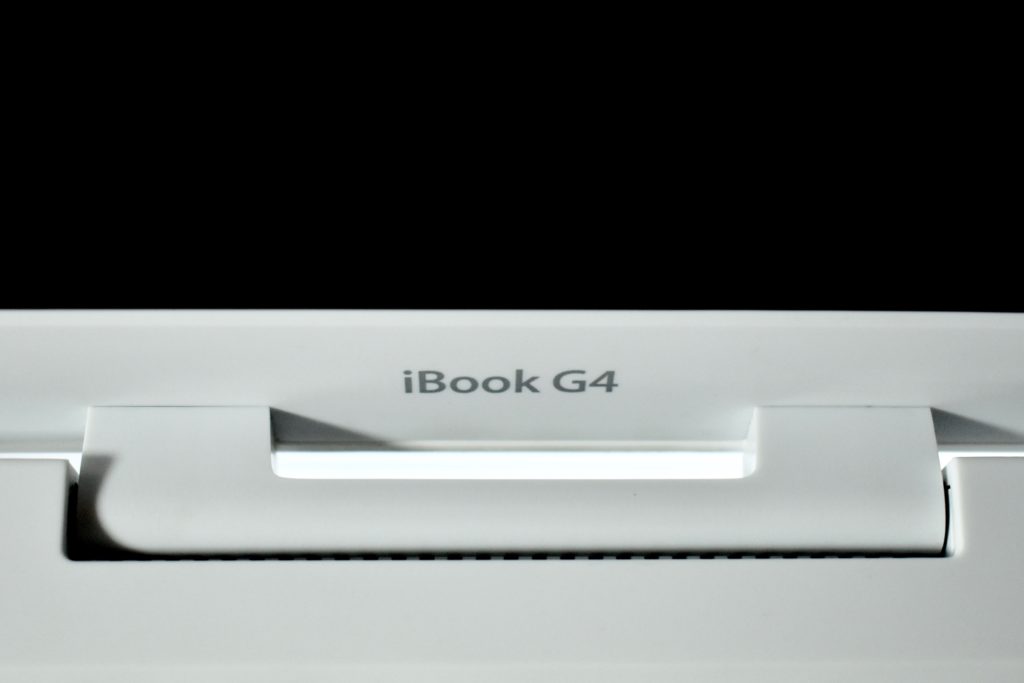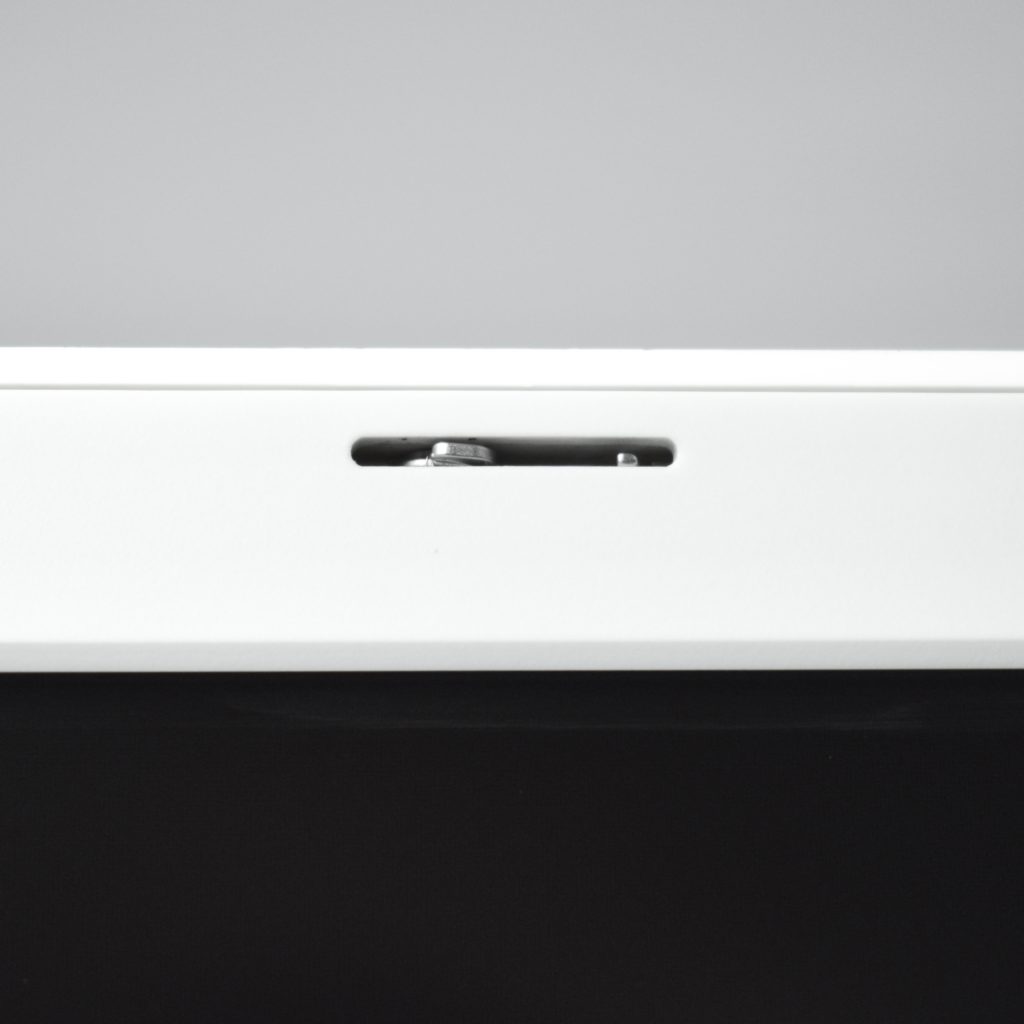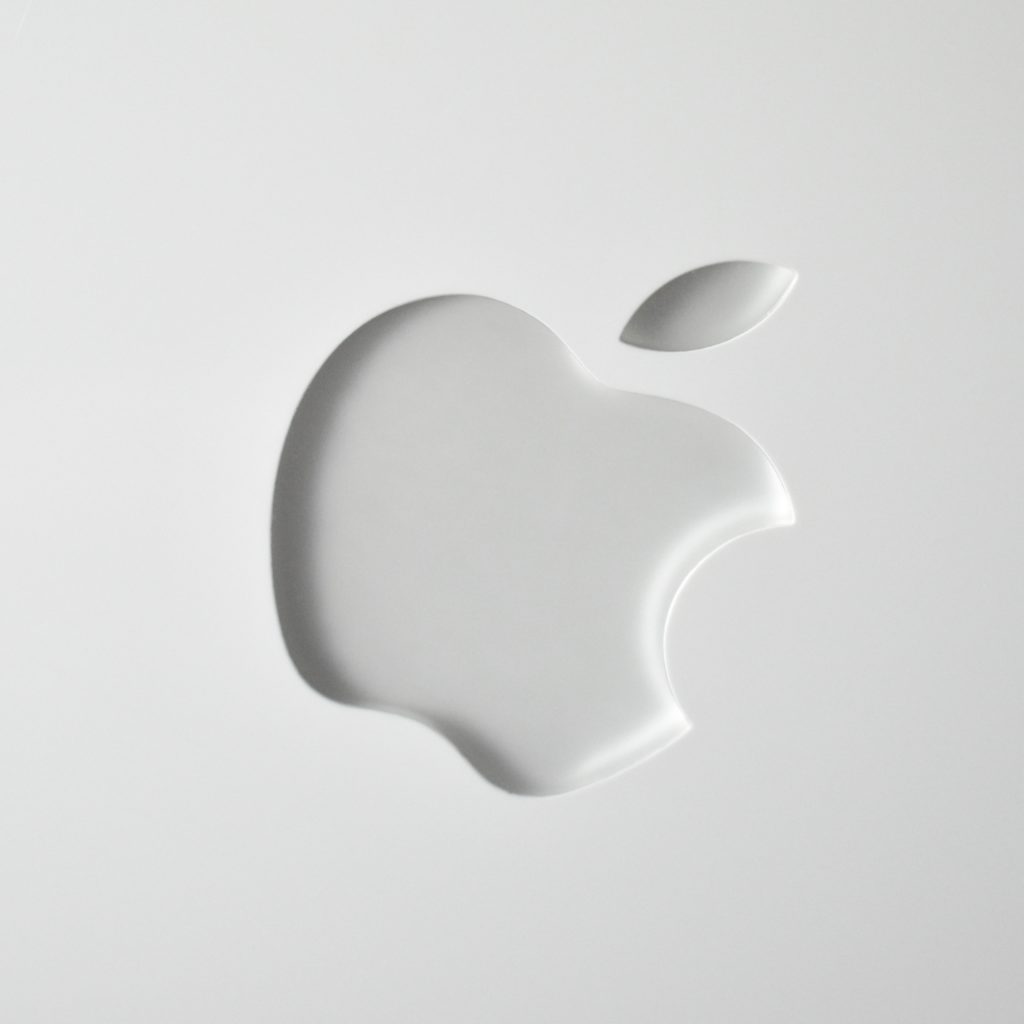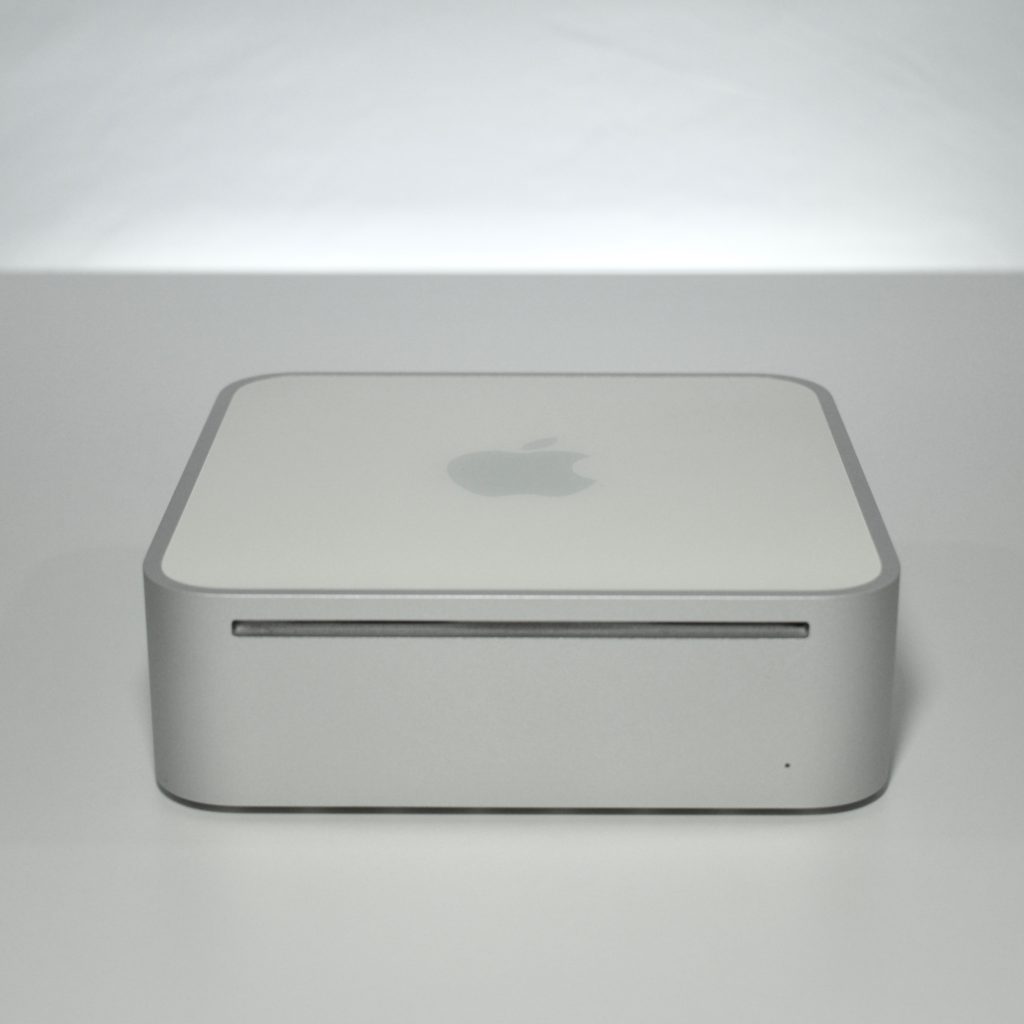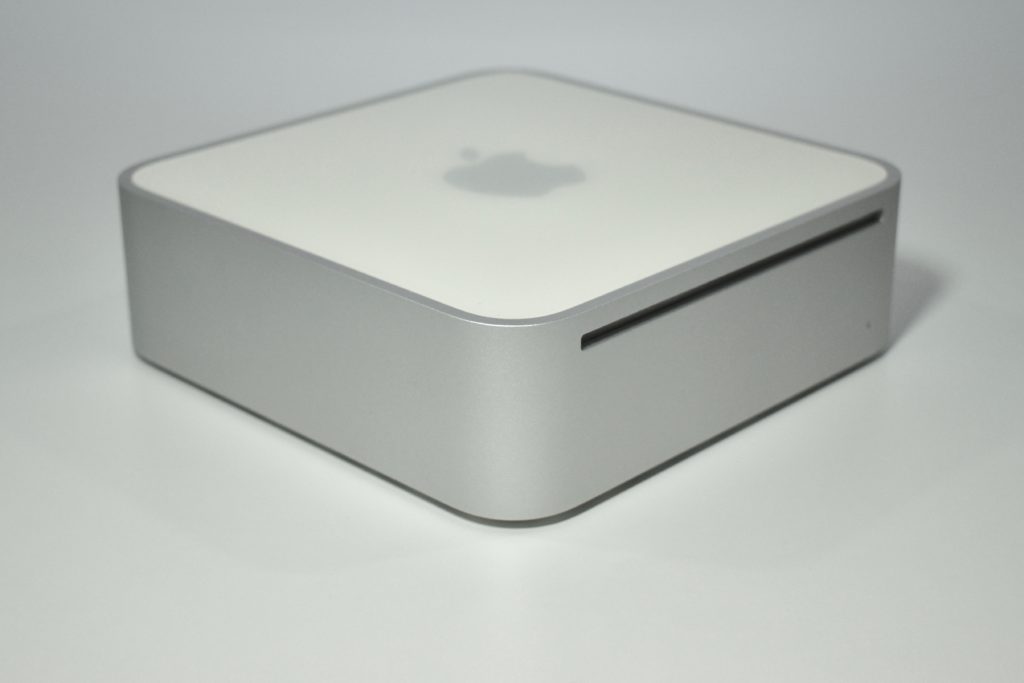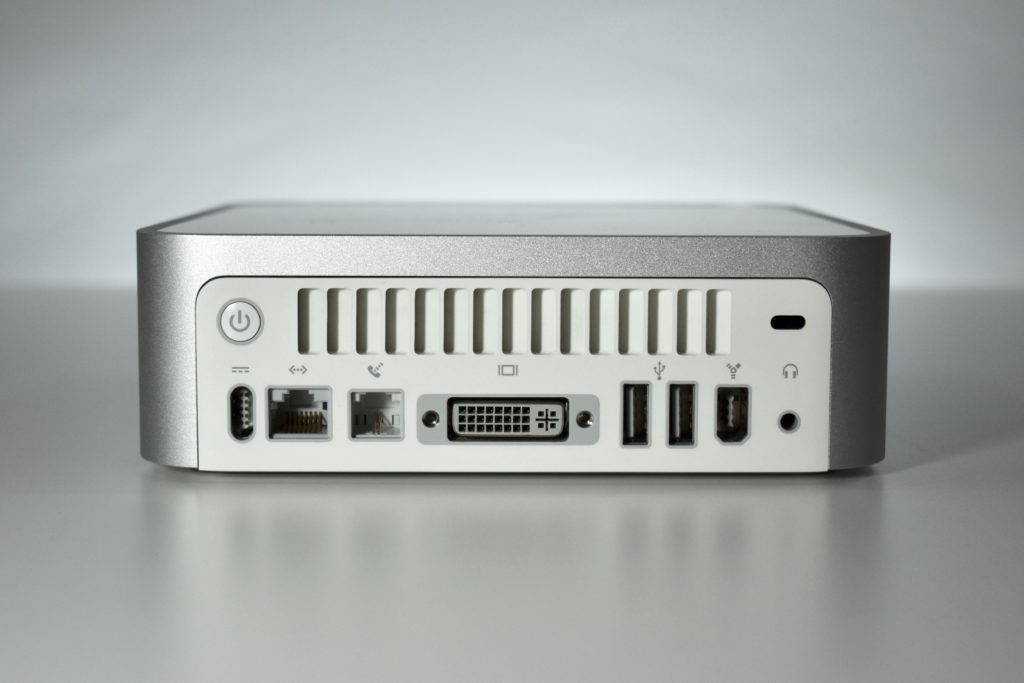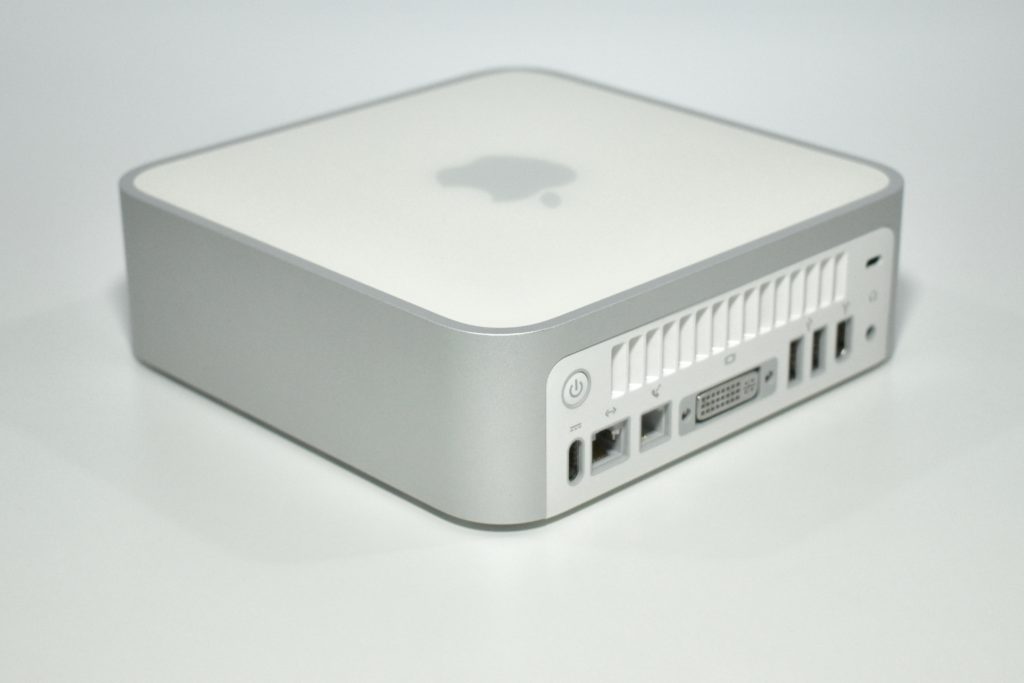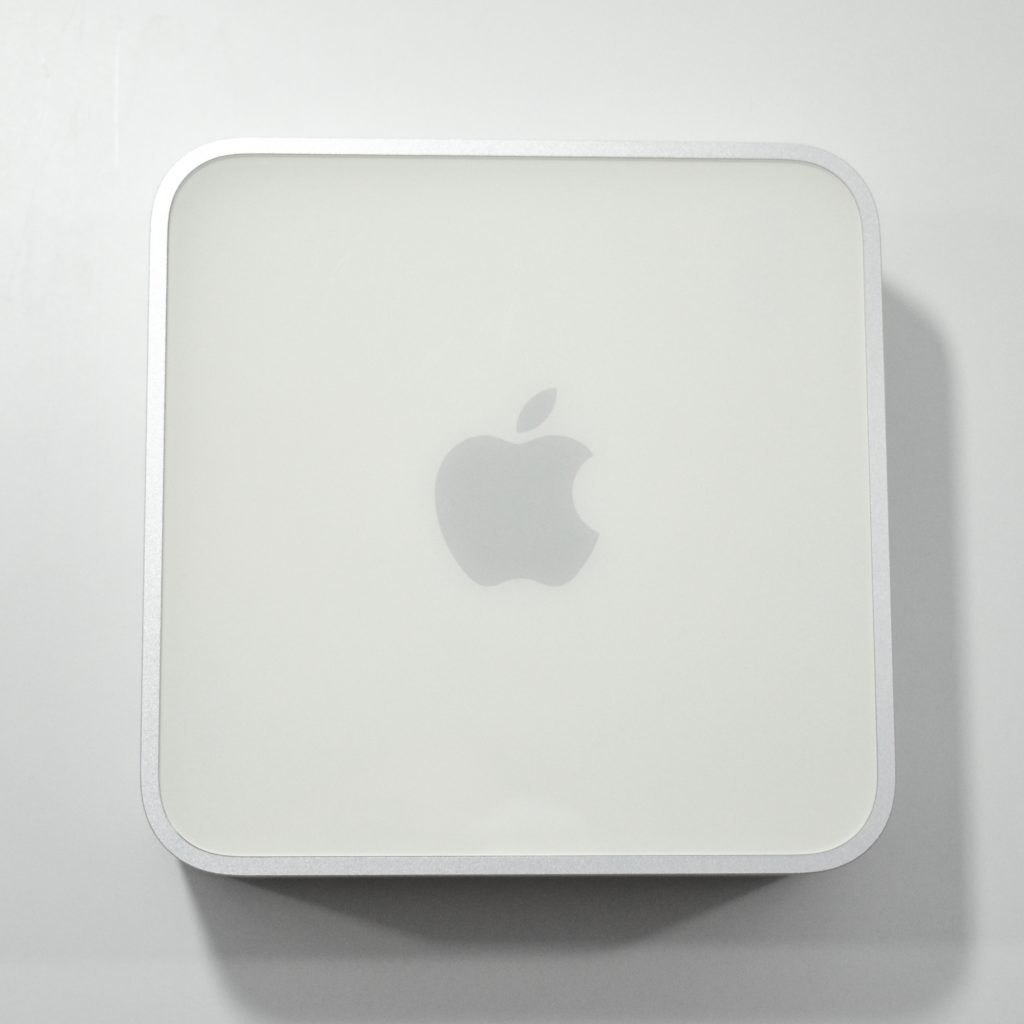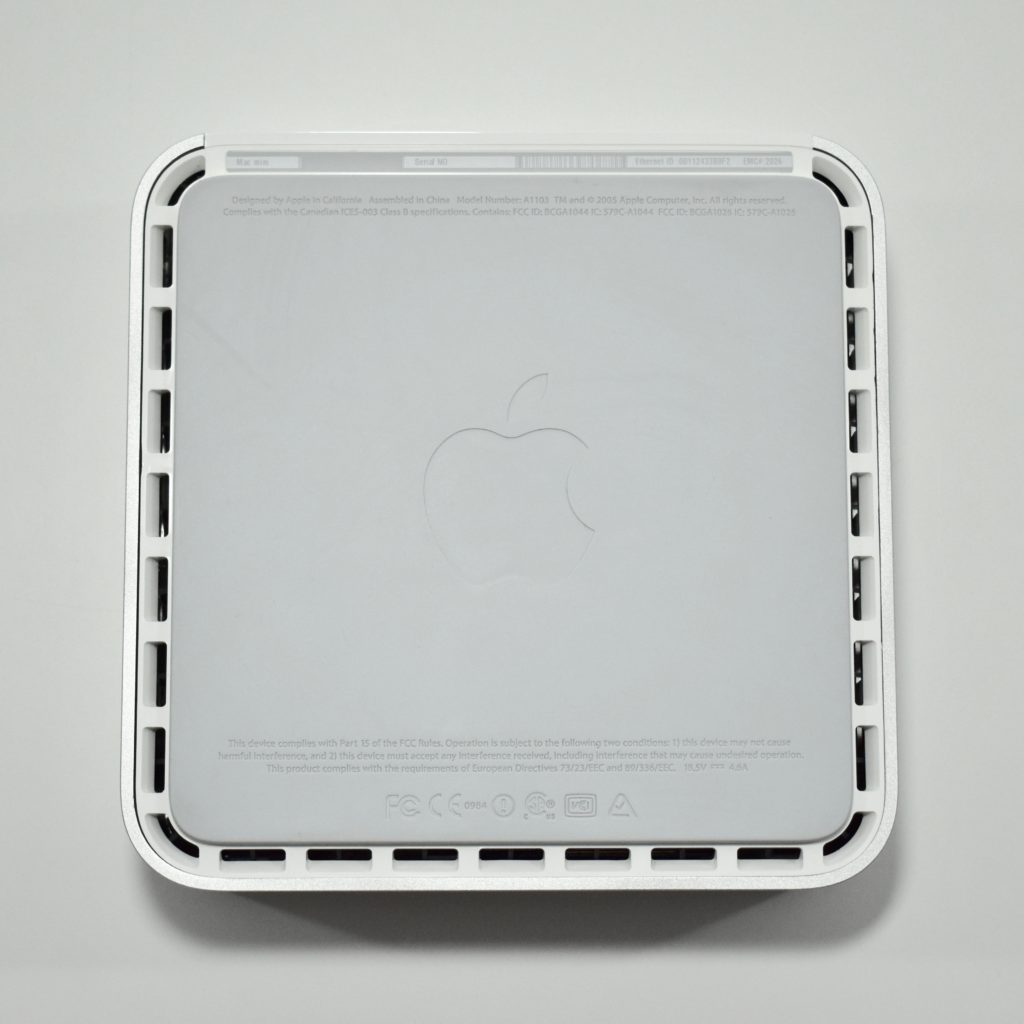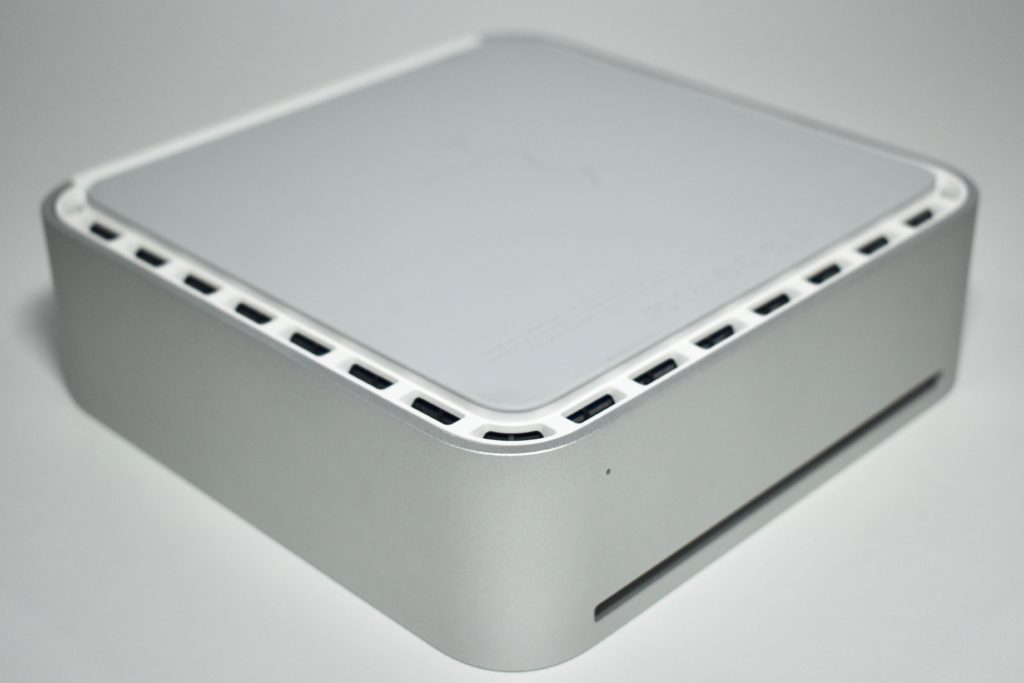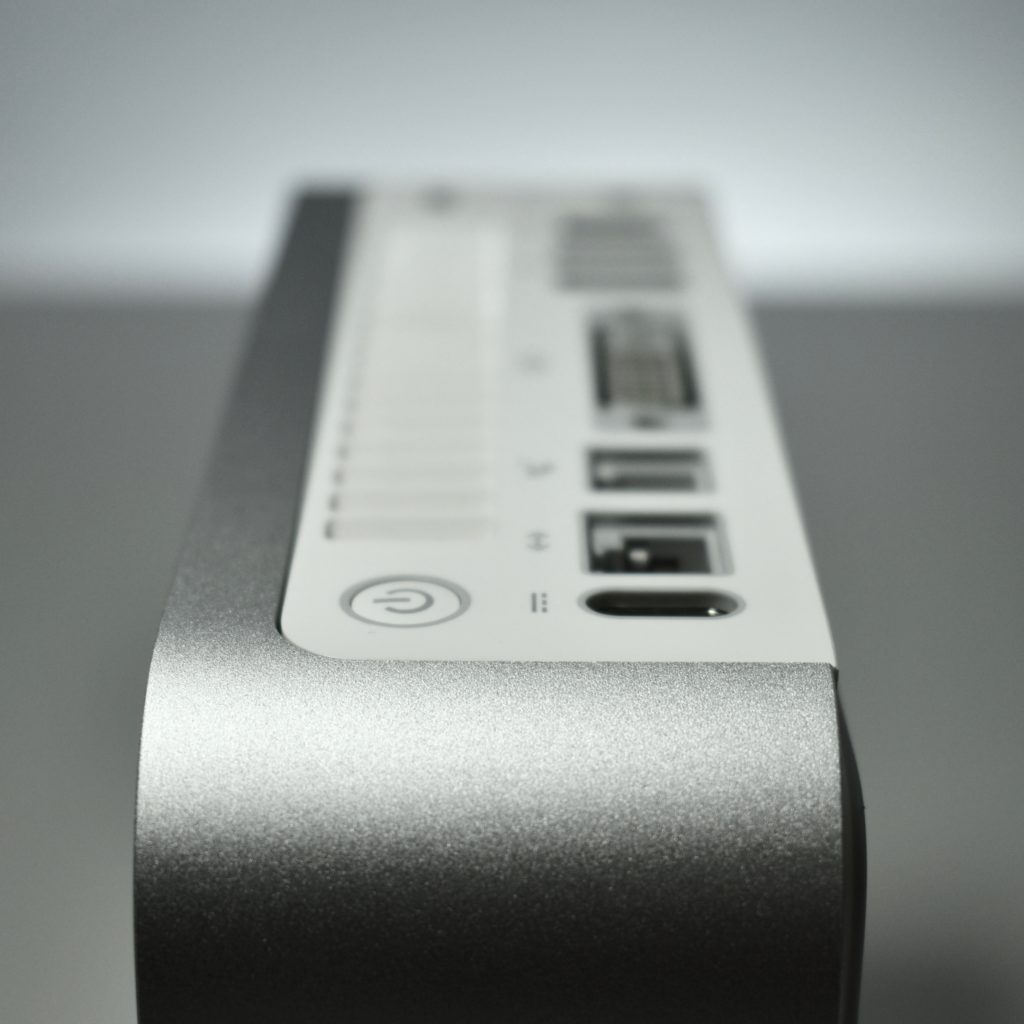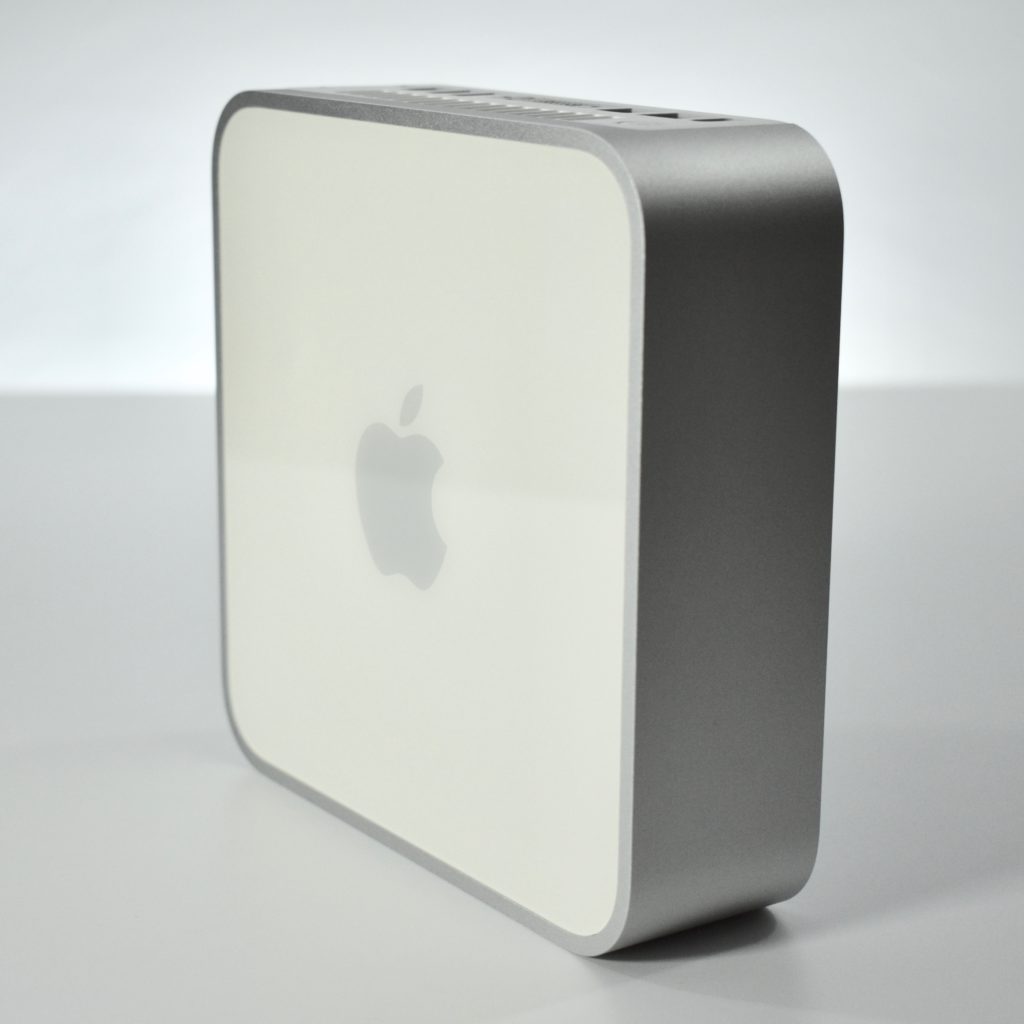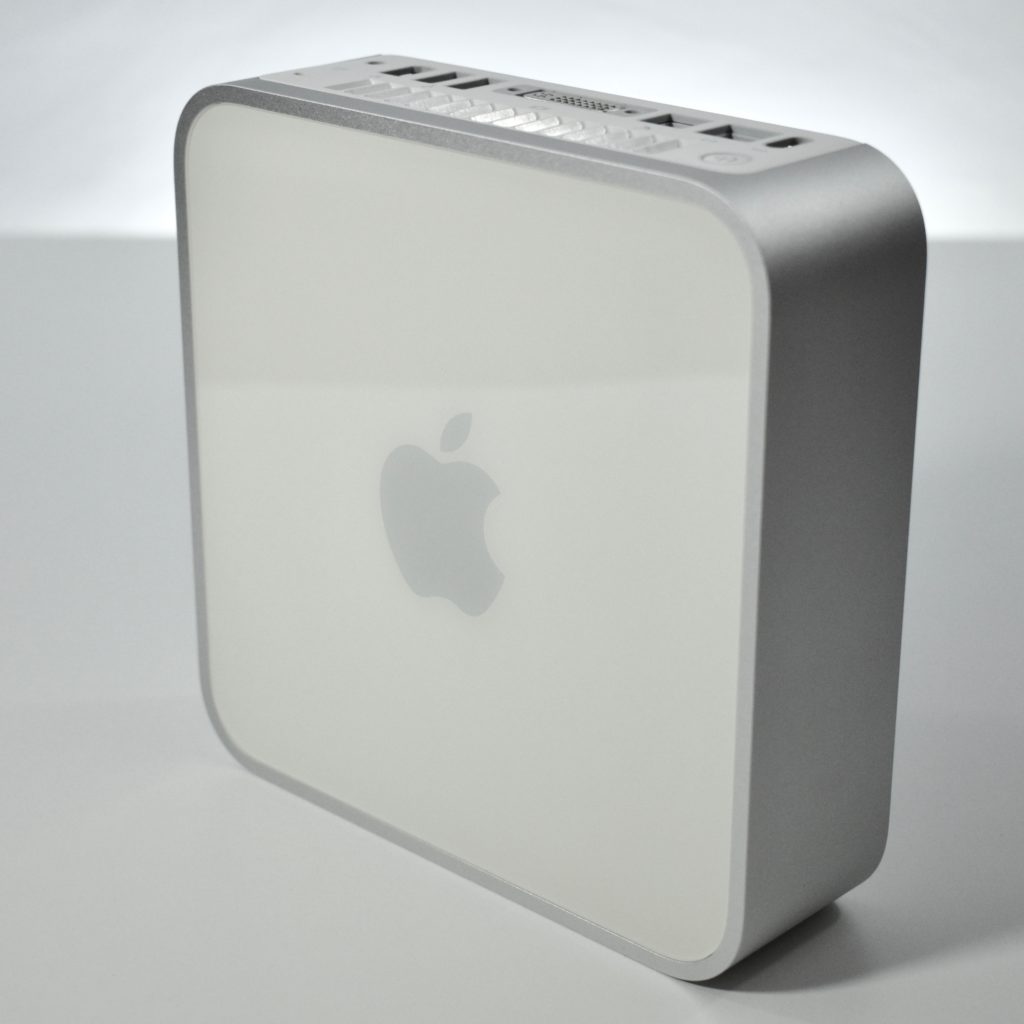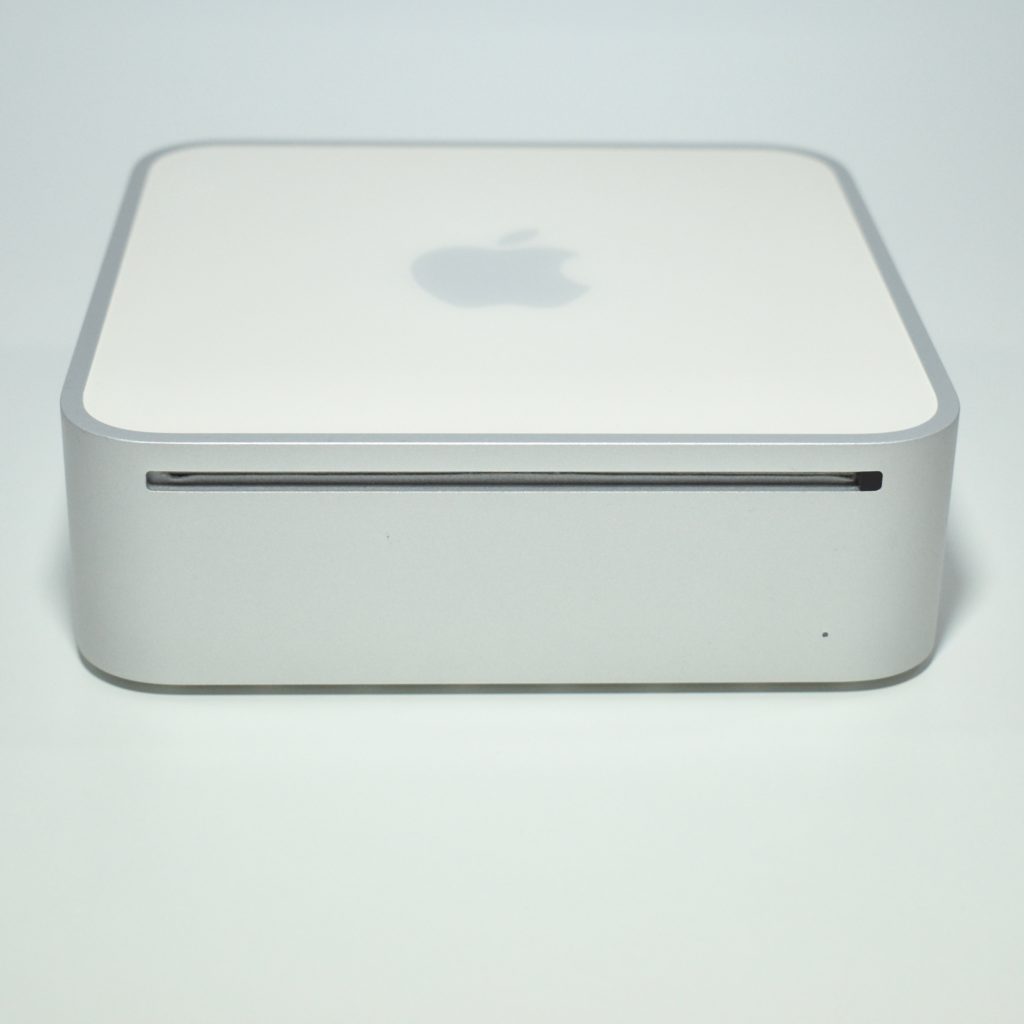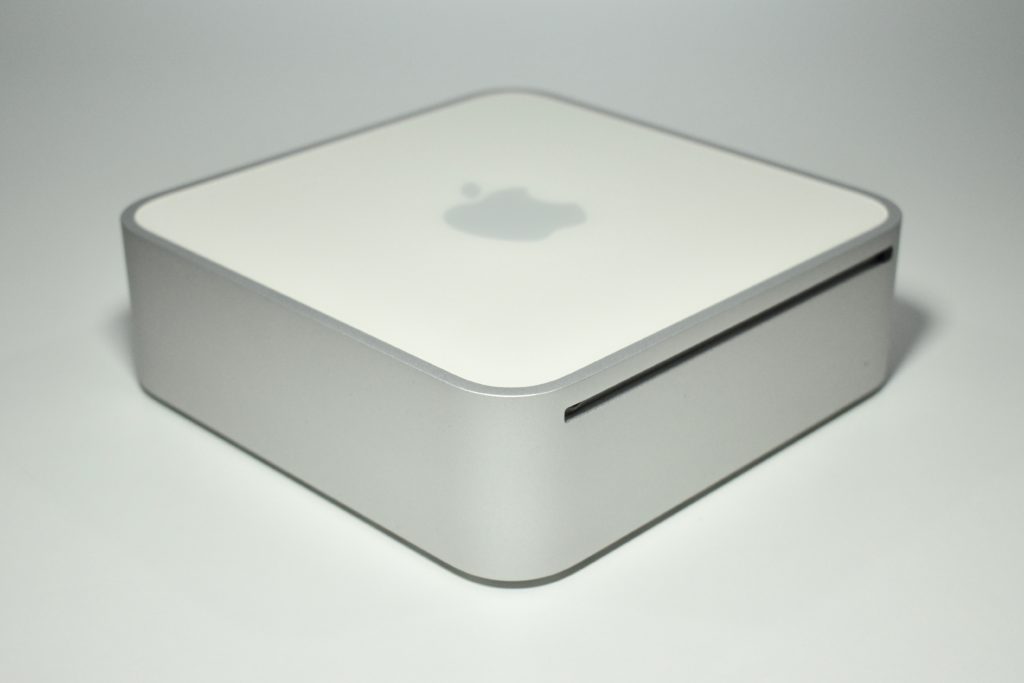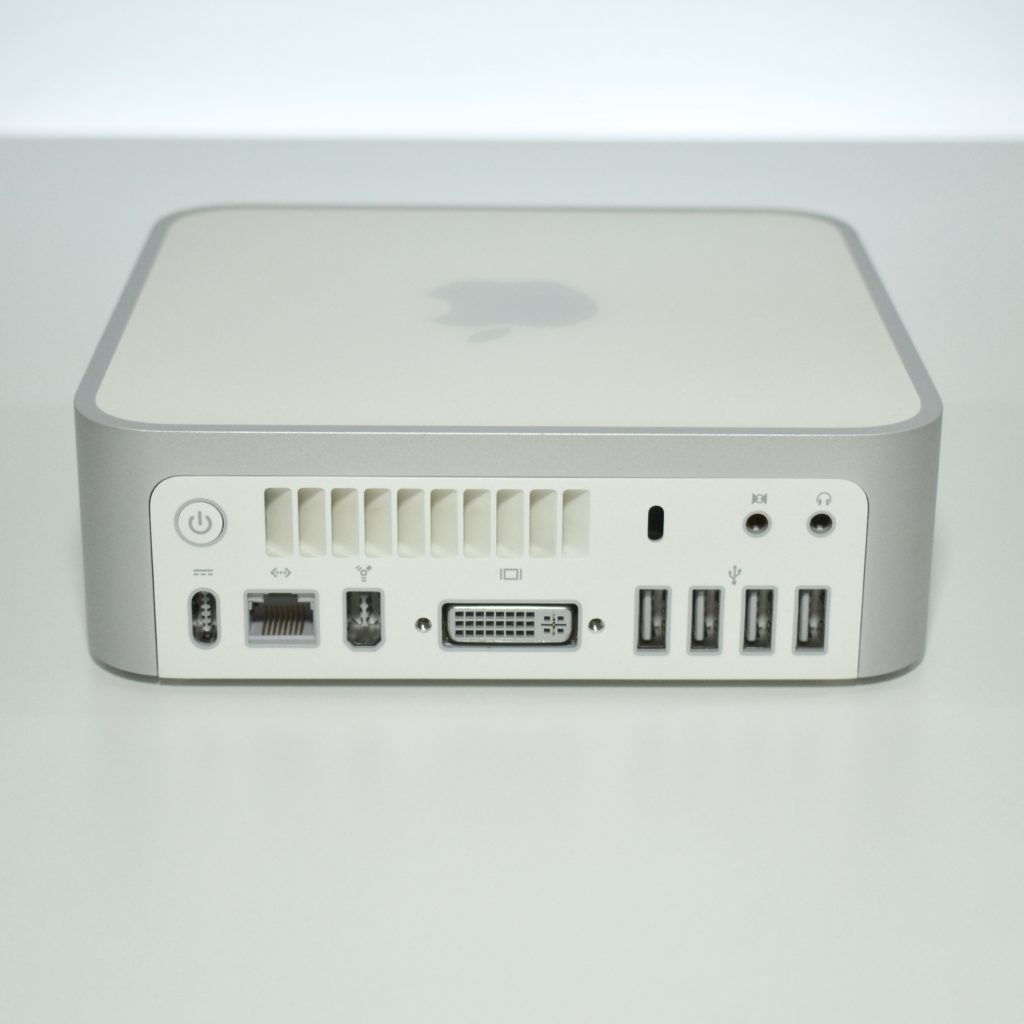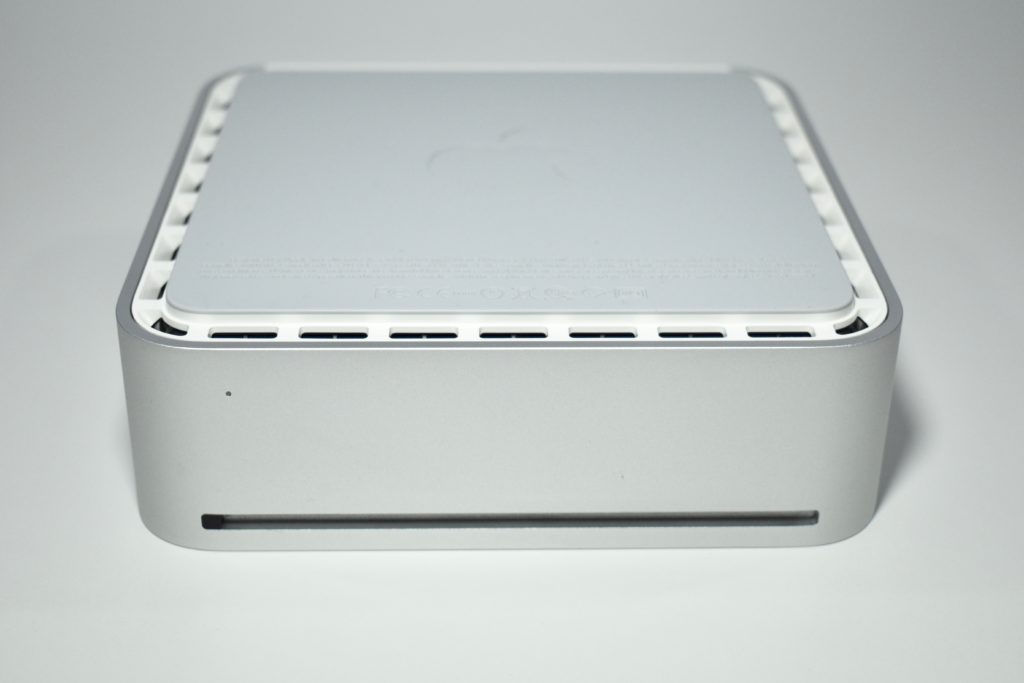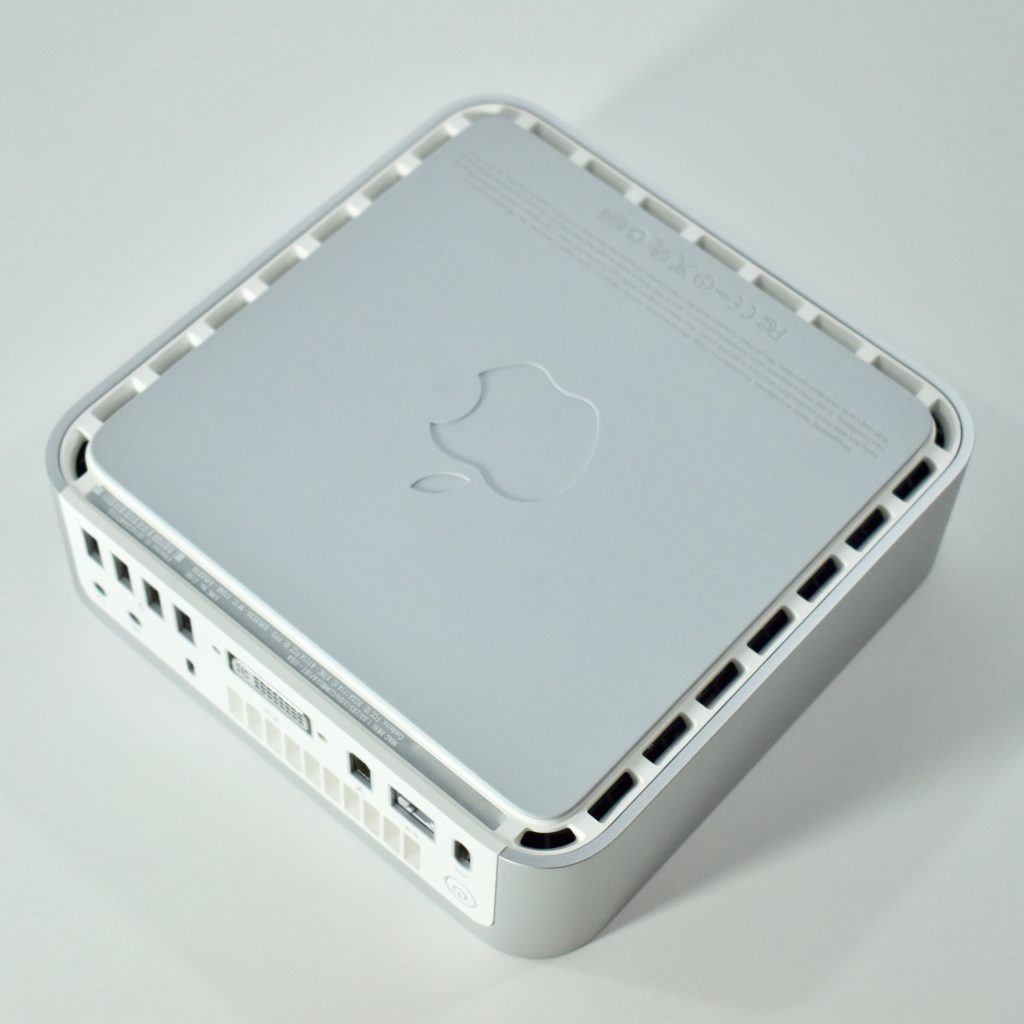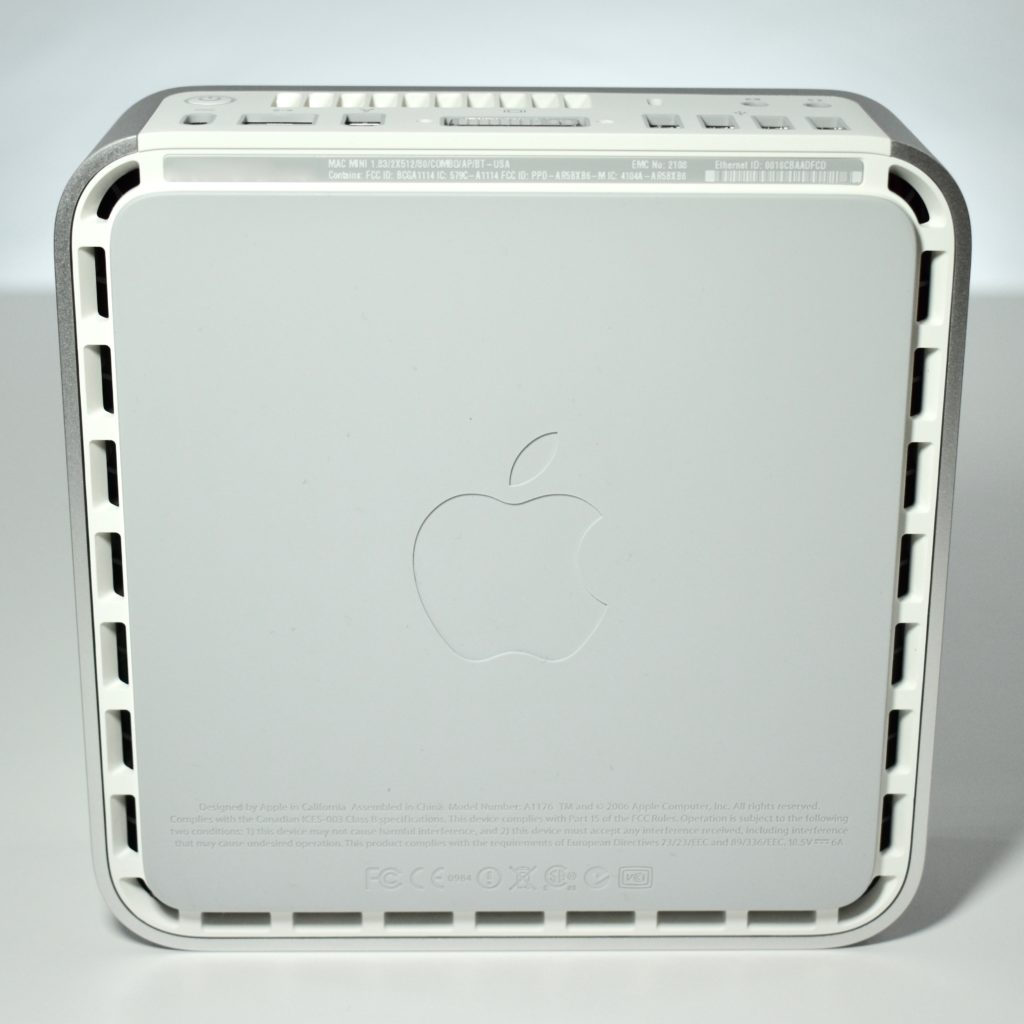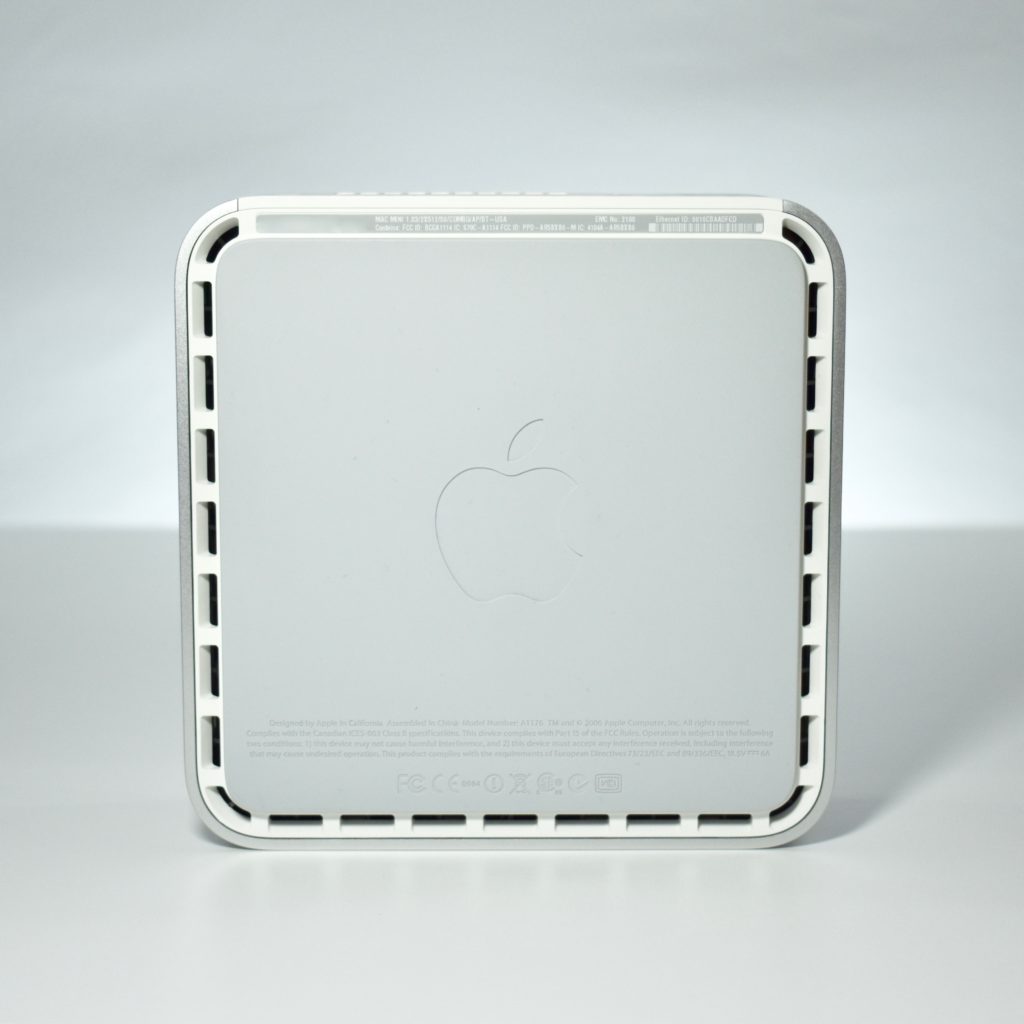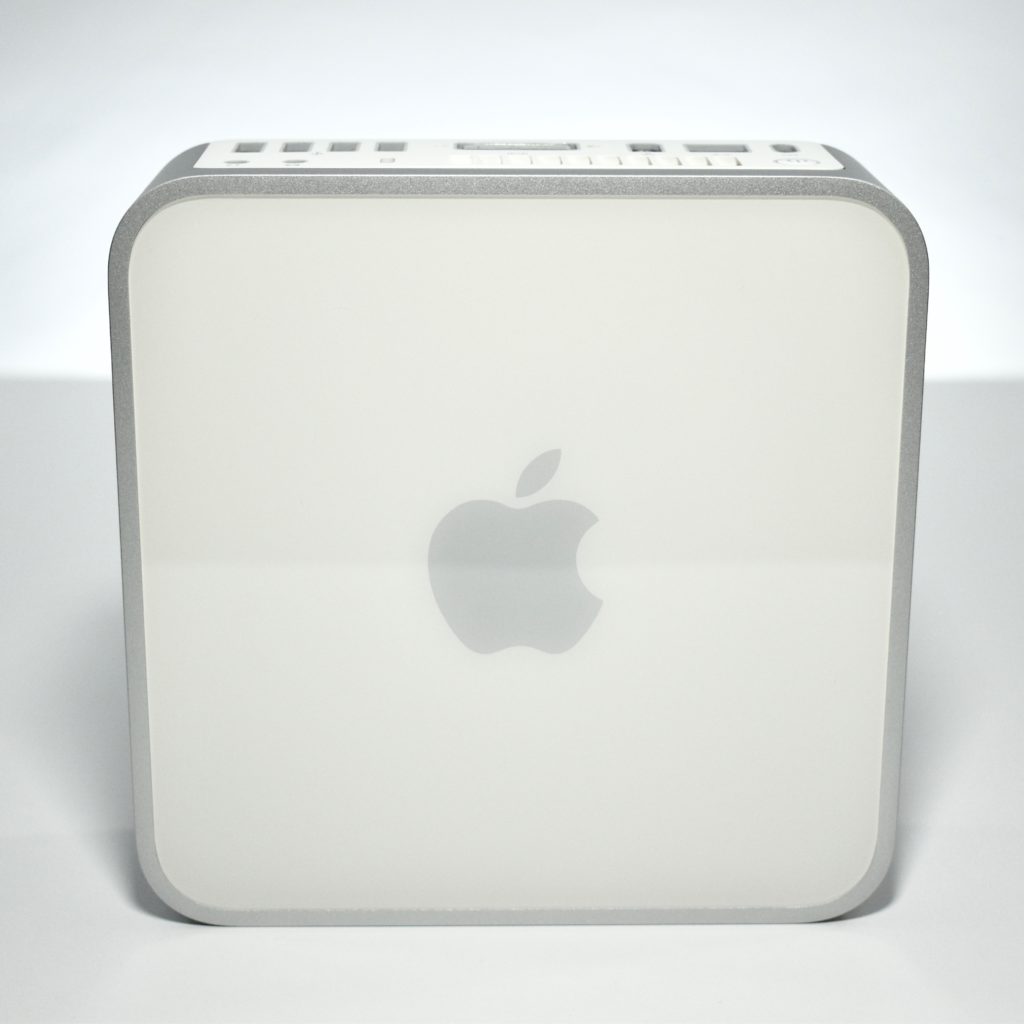The Power Macintosh G4/1.25 GHz “Mirrored Drive Doors” tower used a 1.25 GHz PowerPC 7455 G4 processor, 256 MB RAM, an 80 GB hard drive, a 12X DVD-ROM/CD-RW “Combo” drive, and allowed wireless using an optional AirPort (802.11b) card. This model was released along with new Power Macintosh G5 models to provide a lower-cost alternative for users who did not need the power of the G5 and still wanted to boot with the MacOS 9 operating system.
While similar to the previous “Quicksilver” model, the front of this tower retains the silver opaque color, but adds a mirror-finished plate over the two available optical drive doors in the center. Although two drive spaces are available, this example only uses one “Combo” (CD/DVD reader/writer) drive in the top position. The prominent drive doors also include the power button at the top-center and an “interrupt” button off to the right. A single speaker is placed above the doors. Four conspicuous ventilation holes span the bottom of the front of this tower.
The back of the tower was flipped compared to previous similar tower designs (G3 blue and white, G4 graphite, and G4 Quicksilver), in that the expansion slots are placed at the top. This tower has spaces for five slots, but only uses slot 1 (at the bottom) to house a VGA port and ADC (proprietary Apple Display Connector) port; slots 2–5 are unused. Ports are included below with two USB, two FireWire (400), one ethernet, a space for a modem port, and side-by-side microphone (line-in)/speaker (audio-out) 3.5 mm jacks. A dedicated Apple speaker port is included to allow Apple’s crystal-clear spherical speakers to be used.
The right side of the tower included a latch with a circular rubberized grip that allowed the entire side of the tower to be opened on a hinge, revealing and providing relatively easy access to all internal components. Plug-in slots (such as video, memory, and wireless) were attached to the hinged side, while components such as drives and fans remained attached to the internal metal frame of the tower.
A design concept worth noting in this tower is its two-layer round-hole pattern on the back. The internal layer features smaller, closely spaced holes in silver metal, while the larger outer holes are spaced further apart in light-silver plastic. The concept is similar to the somewhat-maligned “cheese grater” design used in the 2019 Mac Pro tower. The 2019 Mac Pro uses a “machined spherical array” of ventilation holes in a distinctive design—”The lattice pattern on the Mac Pro is based on a naturally occurring phenomenon in molecular crystal structures.” To be clear, the 2019 design is a single piece of machined metal—not two separate layers—but the designs are related visually. In both the 2003 and 2019 towers, the holes are used simultaneously as design, structure, and ventilation.
